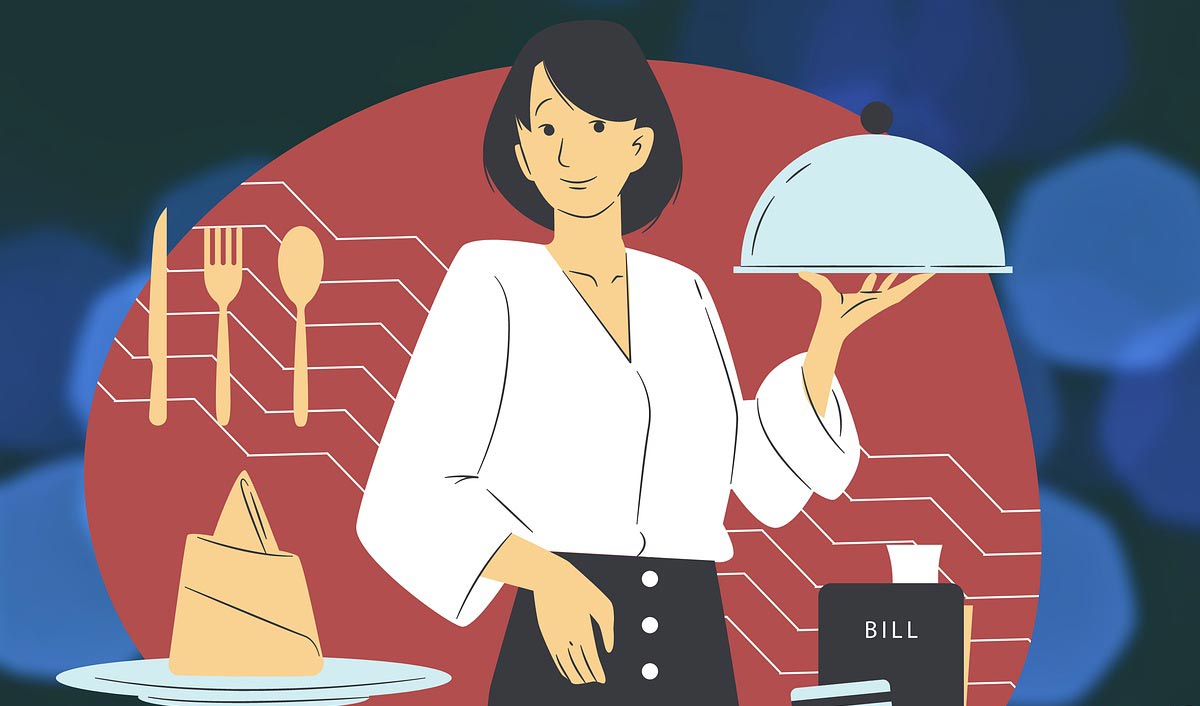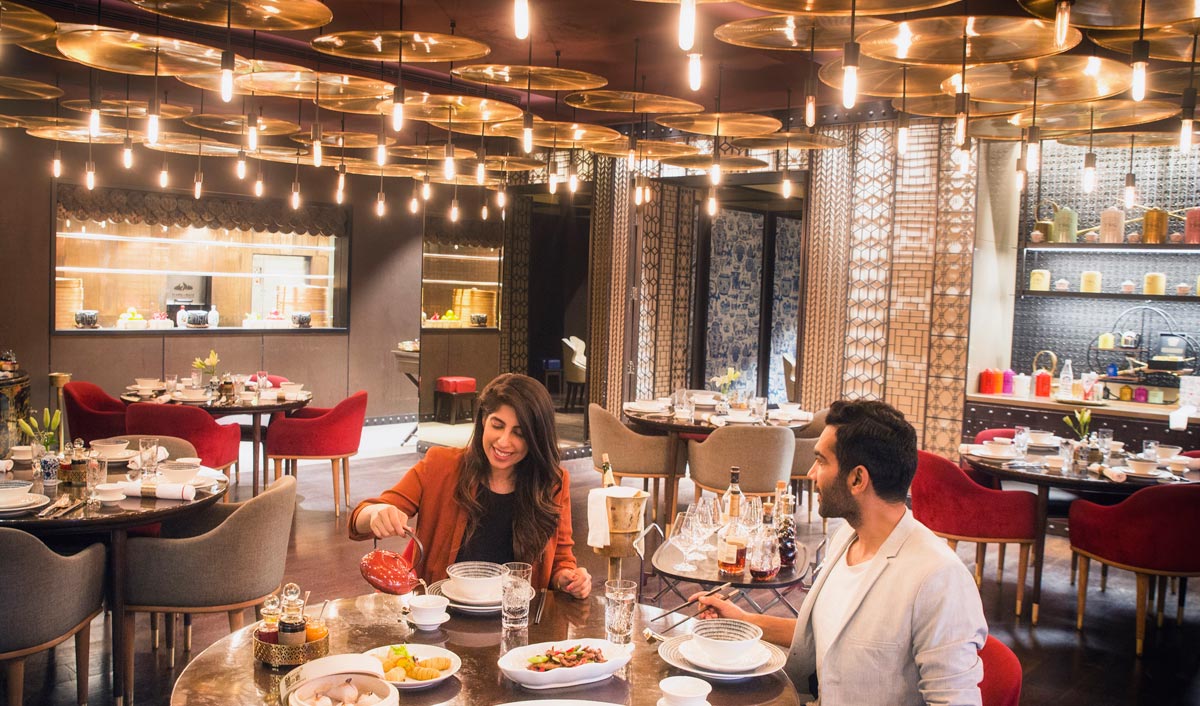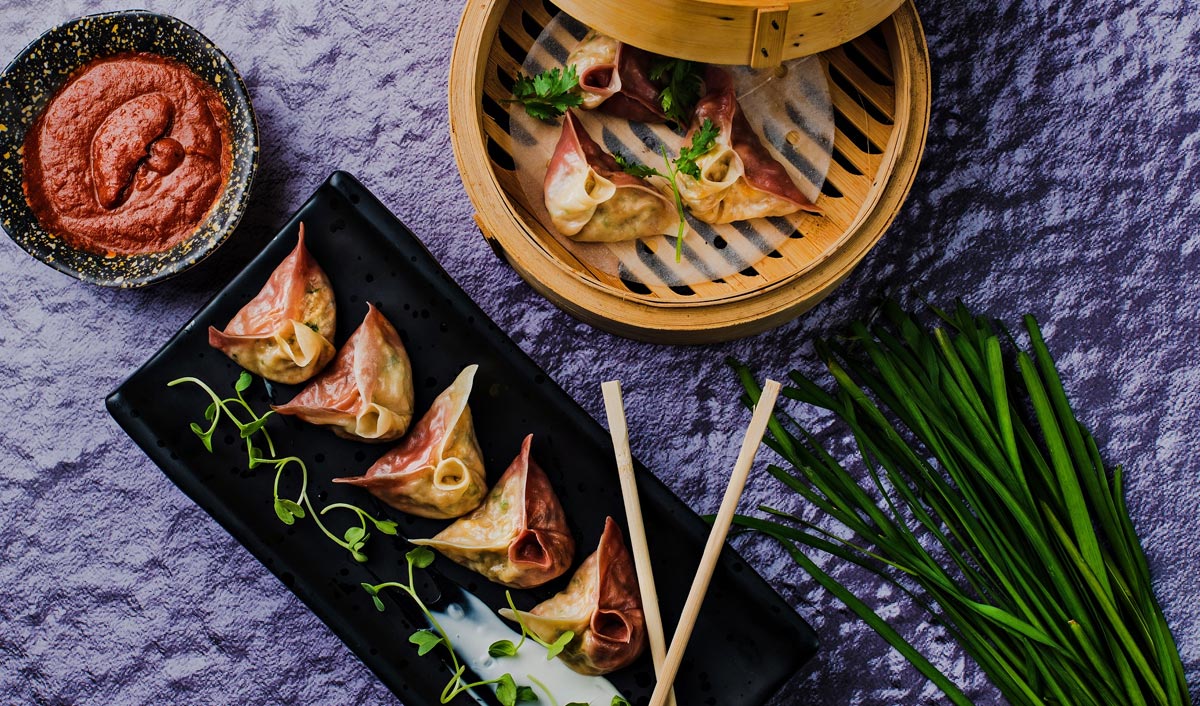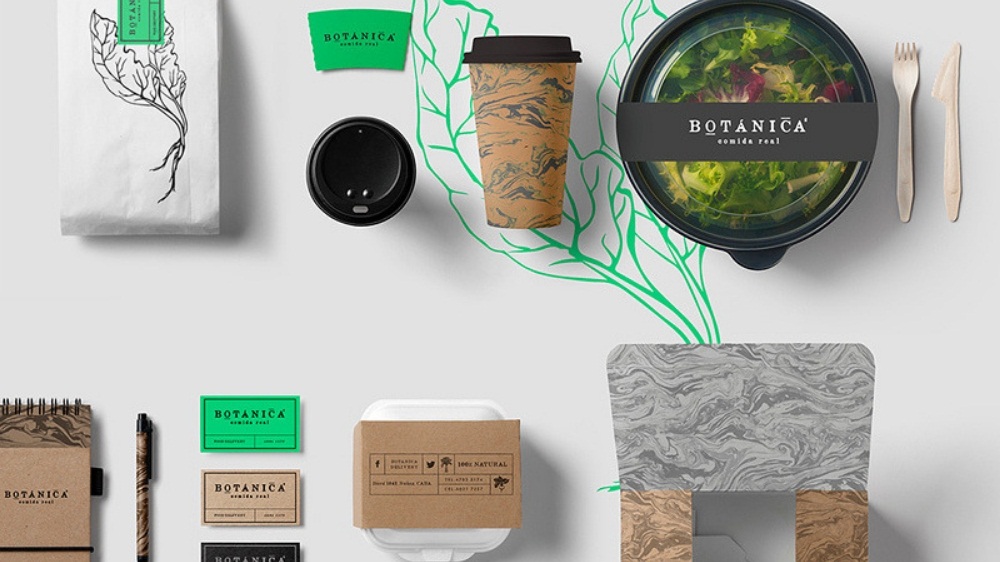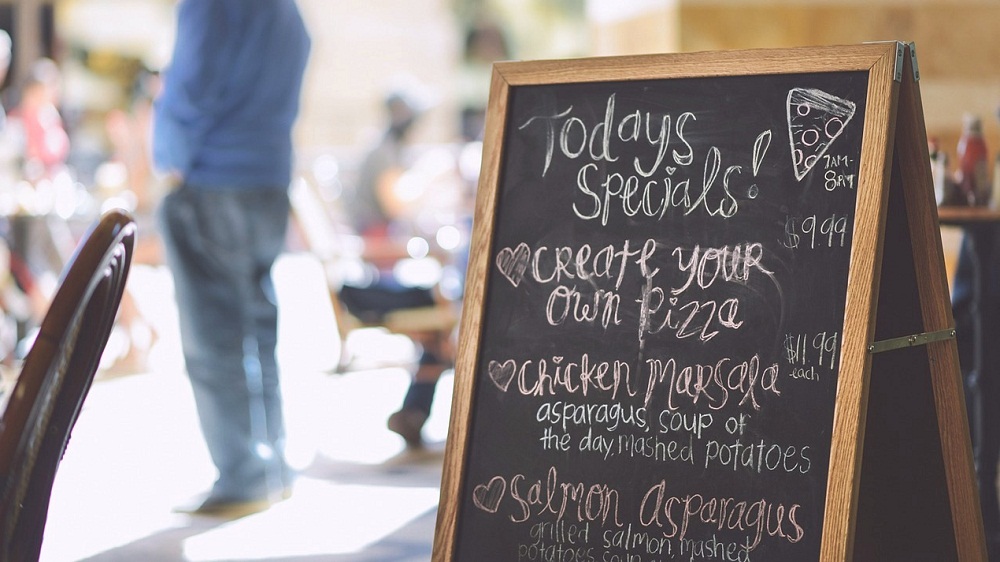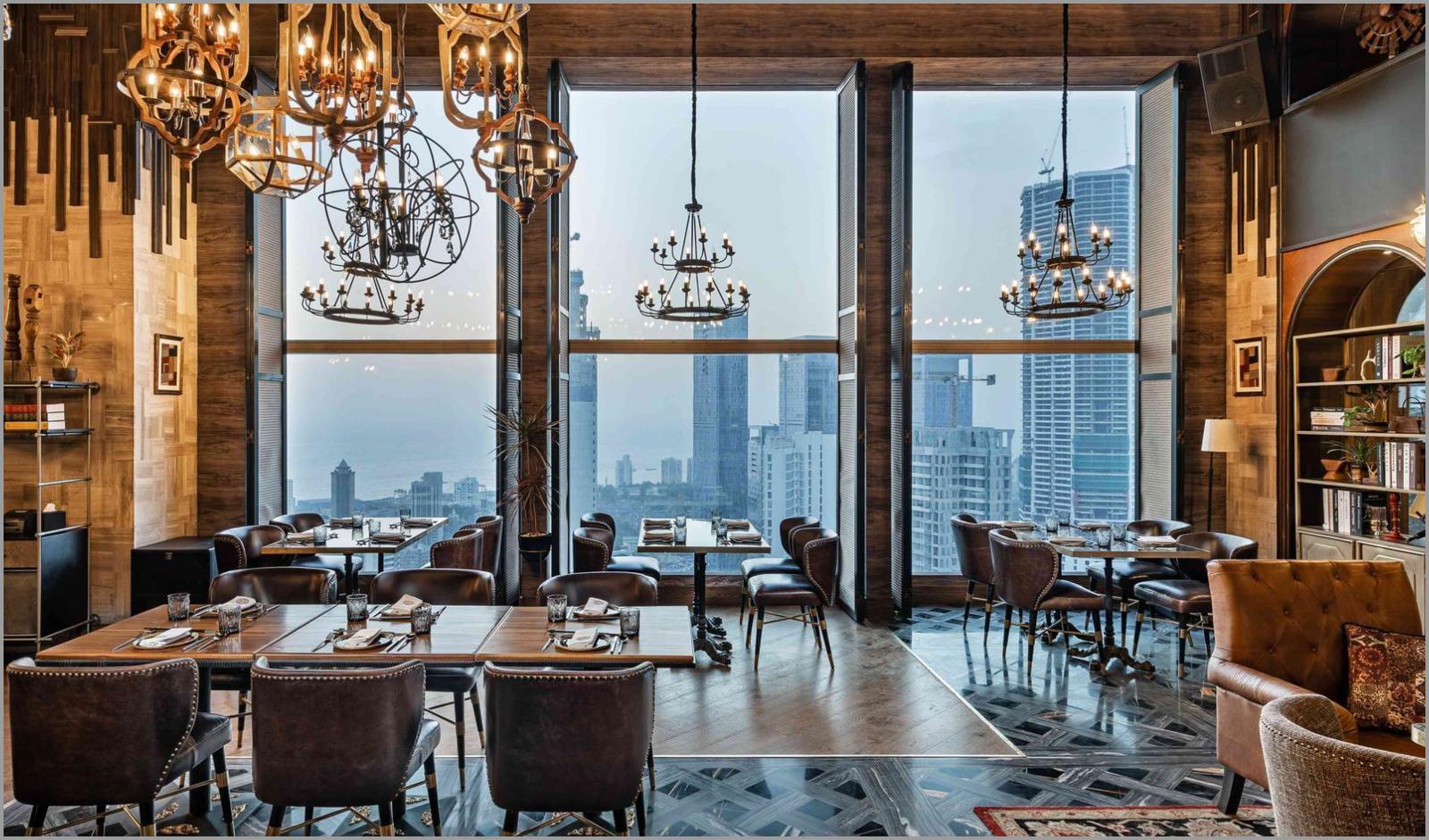
The second wave brings with it another perfect storm of restaurant calamities, food and dry-goods supply shortages, higher labour prices, and minimal labour supply, all inflicted on an industry in which the average profit is only 5 to 8 percent.
With how the restaurant industry looks right now, from shifting consumer behaviour and volatile demand, strategically pricing a menu has never been so complicated, nor so important. The cost of running a restaurant is higher than ever. According to an analysis by Buyers Edge Platform, a restaurant supply-chain company, restaurants are now spending 38 percent more just on food costs alone. Operators have also been compelled to spend on safety products from masks, sanitizing supplies, and various touchless systems to protect their staff and customers. Amid all these situations, raising pricing is the last thing that restaurant owners would want to do.
Manvir Singh Anand, a food business expert and Founder & CEO of Knight Gourmet commented that historically, one can't increase prices when the disposable incomes of all strata of society are hit. Restauranteurs will have to cover losses by leveraging multiple revenue streams, dine, takeaway, delivery and a major focus on bulk meals and catering services, leveraging the power of customer data and CRM.
Looking at the tough times for both restaurant owners and the customers, it definitely does not make sense to charge more. Anand further mentioned that dynamic pricing is at the core of price restructuring, i.e. having affordable dining experiences for basic and standardized menus followed by more curated and personalized dining experiences being positioned at a premium.
Determining the pricing elasticity of items can also help the restaurants to maintain their existing prices. By elasticity, it means ‘the responsiveness of demand to a change in price’. Commodity items like soda and wings have low elasticity. Unique and signature items tend to have high elasticity. The higher the pricing elasticity the easier it is to raise the price.
“Studying the competition well and restructuring pricing to build price parity should be a good strategy to stay relevant in future times. Backend/Supply chain with a focus pricing constant, the supply chain and menu engineering will be pivotal,” he said.
The sector understands that covid has affected the purchasing power of customers and when people are fighting for survival in the market rise in charges will just lead to an ugly price war that will not benefit the industry.
According to Kushang, Co-founder and CEO of SupplyNote, the solution is not to charge more from the customer rather the restaurant owners should focus on lowering the cost of operations.
“The efforts are more towards widening the reach and filling the gap created by the pandemic. The outlets are focusing more on catering clients through online delivery systems till the situation gets better. Also, they are gradually moving towards technology implementation in their operations to be more sustainable and avoid any sort of losses,” Kushang commented.
In order to lower down the operation costs, restaurants should take various steps like eliminating high cost/slow-moving items in the menu. Similarly, vendor re-negotiation should be done and procurement and par stock levels will have to be reviewed. Above all, stringent control of the food cost and wastage percentage will build cost-consciousness.
While price restructuring is the only sustainable strategy for dine-ins to stay relevant and revive in the coming times, Anand feels that dynamic pricing comprising of safer and affordable dining experiences is a sure shot recipe for revival.
In the present situation, restaurants are witnessing the food cost on a higher side due to several operational disruptions. Many owners are grappling with this issue. “The reason is apparent enough. The supply-demand of raw material has been adversely affected by the pandemic and the lockdown, thereby directly increasing our food cost. In spite of this we are going vocal for local and in due time prices and the supply chain will be positively restored,” Abhayraj Kohli, Founder of Tori said.
The restaurant industry is a competitive market. And it would be incorrect to say that any one particular restaurant is functioning within a consistently secure space. “Having said that we as an industry or individually we cannot afford to increase our prices to recover from the loss sustained because it comes down to survival of the fittest,” Kohli commented. The testimony to the statement is reflecting from the past year when the industry was hit badly yet took all the pain without passing on the losses down to the customer.

Coffee has a magical way of bringing people together, whether you're a die-hard espresso fan, a casual coffee drinker, or someone who can't get going until they have their first cup in the morning. Coffee culture has given us so many reasons to celebrate our favorite caffeinated drink, from the strong smell that tells us it's time to start a new day to those cozy café moments that need the perfect caption.
If you want to add some coffee-themed flair to your social media posts, need ideas for your coffee shop's marketing materials, or just want to show how much you love coffee, you've come to the right place. We picked out 121 coffee quotes and captions that perfectly capture every mood, moment, and reason to love coffee.
These quotes cover the whole range of coffee culture, from funny one-liners that will make your followers smile to deep thoughts about the simple joys of life. If you're posting about your morning routine, sharing a great photo of latte art, or making content for your coffee-related business, you'll find the right words to go with your coffee-related content.
So get your favorite mug, sit down with your favorite coffee, and find the perfect quote to show the world how much you love coffee.
Best Coffee Quotes and Captions for Instagram/Snapchat
Short Coffee Captions
- "Espresso yourself."
- "Life begins after coffee."
- "Coffee first, schemes later."
- "Brew-tiful mornings."
- "One sip closer to greatness."
- "Bean there, done that."
- "Caffeine mode: ON."
- "Daily grind, served hot."
- "Rise, grind, repeat."
- "Just one more cup."
Classy Coffee Captions
- "Elegance in every pour."
- "For those who taste life slowly."
- "A refined ritual, one cup at a time."
- "Sip sophistication."
- "Arabica dreams, aesthetic scenes."
- "Crafted for quiet moments."
- "Grace brewed in porcelain."
- "Your pause, perfected."
- "Where warmth meets refinement."
- "A blend above the rest."
Black Coffee Captions
- "Straight up. No sugar, no apologies."
- "Black as night, bold as truth."
- "Pure, dark, and deeply honest."
- "No cream, no nonsense."
- "For those who like their mornings unfiltered."
- "Simplicity never tasted so strong."
- "Just beans and bravery."
- "The darker, the deeper the love."
- "No milk, just willpower."
- "Bold brew for bold moves"
Cold Coffee Captions
- "Chill in a cup."
- "Brewed cool, served cooler."
- "The refreshment you never skip."
- "Sip into something smooth."
- "Hot outside, chill inside."
- "Cold caffeine, hotter mood."
- "Iced, not rushed."
- "Shake it, sip it, love it."
- "Cooling cravings daily."
- "Keep calm and pour cold."
Iced Coffee Captions
- "Ice, ice barista."
- "Frothy, fresh, fabulous."
- "Summer’s secret weapon."
- "Caffeine over cubes."
- "When life gives you heat, get iced coffee."
- "Cold brew, warm heart."
- "Ice meets bean perfection."
- "Stirred for satisfaction."
- "Liquid luxury over ice."
- "Freeze your grind."
Night Coffee Captions
- "Midnight musings, mug in hand."
- "For the thinkers, the dreamers, the night owls."
- "Caffeine, stars, and quiet hours."
- "A dark roast for a darker sky."
- "Brewed thoughts under moonlight."
- "Late-night latte logic."
- "Sleep is optional, coffee is not."
- "The calm after the café rush."
- "When the world sleeps, the grind continues."
- "Silence tastes better with coffee."
Funny Coffee Captions
- "Decaf? Never heard of her."
- "Coffee — because adulting is hard."
- "Life’s too short for bad brews."
- "Behind every successful person is a large cup of coffee."
- "I like my coffee like I like my humor — dark."
- "Espresso yourself before you wreck yourself."
- "Death before decaf."
- "Brewed awakening."
- "Coffee: the most important meal of the day."
- "Caffeine and sarcasm — my daily blend."
Morning Coffee Quotes
- “I orchestrate my mornings to the tune of coffee.” – Terri Guillemets
- “Way too much coffee. But if it weren’t for the coffee, I’d have no identifiable personality whatsoever.” – David Letterman
- “To me, the smell of fresh-made coffee is one of the greatest inventions.” – Hugh Jackman
- “Coffee is a language in itself.” – Jackie Chan
- “A morning without coffee is like sleep.” – Unknown
- "Wake up. Drink coffee. Dominate."
- "Brew your sunrise."
- "Morning mantra: sip, smile, start."
- "First the coffee, then the plans."
- "Pour joy into your A.M."
Sunday Coffee Quotes
- "Slow sips, soulful Sundays."
- “Sunday clears away the rust of the whole week.” – Joseph Addison
- "Brunch isn’t brunch without coffee."
- "Church, chill, coffee."
- "Brewed for lazy mornings."
- "A hug in a mug, best on Sundays."
- "Sunday fuel = a double shot."
- "Sip back and relax."
- "Latte love, Sunday style."
- "No alarms, just aroma."
Monday Coffee Quotes
- “I’d rather take coffee than compliments just now.” – Louisa May Alcott
- "Mondays should be canceled… unless coffee is involved."
- "Weekend detox? Just kidding. More coffee, please."
- "Coffee: because Monday happens every week."
- "Brew. Hustle. Repeat."
- “May your coffee be strong and your Monday short.” – Unknown
- "Powered by beans and ambition."
- "Mission: survive Monday. Coffee is step one."
- "Rise and grind… or just grind first."
- "Espresso yourself into the new week."
Evening Coffee Quotes
- "Post-work peace in a cup."
- "Brewing balance after the bustle."
- "Coffee, books, and city lights."
- "Evenings taste better with espresso."
- "The sunset deserves a second cup."
- "Unwind, one pour at a time."
- "Caffeine meets candlelight."
- "Nightcap, but make it coffee."
- "Let the calm brew in."
- "When dinner ends, coffee begins."
Coffee Quotes from Famous Authors
- “I have measured out my life with coffee spoons.” – T.S. Eliot
- “Coffee was only a way of stealing time that should by rights belong to your slightly older self.” – Terry Pratchett
- “Adventure in life is good; consistency in coffee even better.” – Justina Chen
- “Coffee is a way of stealing time which should by rights belong to your older self.” – Terry Pratchett
- “It’s amazing how the world begins to change through the eyes of a cup of coffee.” – Donna A. Favors
- “Science may never come up with a better office communication system than the coffee break.” – Earl Wilson
- “Coffee connects us in so many ways.” – Rohan Marley
- “Coffee smells like freshly ground heaven.” – Jessi Lane Adams
- “Coffee is a hug in a mug.” – Unknown
- “I judge a restaurant by the bread and the coffee.” – Burt Lancaster
There you have it: 121 coffee quotes and captions to make every coffee moment you share with the world better. These quotes are here to help you say what every coffee lover knows: life is better with a good cup of coffee in hand. They can help you find the right words to go with your latte art masterpiece, a new favorite quote to put in your kitchen, or some ideas for your next coffee-themed project.
So go ahead and post that picture of coffee you've been saving, start that coffee blog you've been thinking about, or just enjoy a quiet moment with your favorite mug and a quote that makes you smile. Life is too short for bad coffee, and even shorter for captions that aren't interesting. What are you waiting for now? A quote is all you need to write your next great coffee post.

From launching secret menu items, to introducing limited edition menu and bringing their global favourites into their Indian menu; global restaurant brands are doing it all to attract customers.
Domino’s Pizza, India’s largest pizza chain, is redefining group feasting with the launch of the Big Big 6-in-1 Pizza – a game-changing innovation designed for bigger bites, bigger flavours, and bigger celebrations.
A first-of-its-kind offering, this massive 24-slice pizza packs in six distinct flavours, ensuring everyone gets their favourite flavour. Whether it’s an IPL watch party, a birthday party, or house gatherings, this pizza is built to make every get-together exciting—no more topping debates, just pure pizza joy!
“At Domino’s, we’re always looking for ways to make pizza moments more exciting for our consumers and to be relevant in more occasions. That’s why we created the Big Big 6-in-1 Pizza—a first-of-its-kind, square-shaped, large pizza with six flavours, 24 slices, and at an unbeatable introductory price,” Chella Pandyan, Chief Growth and Marketing Officer at Domino’s India, commented.
Designed for big groups and bigger moments, the Big Big 6-in-1 Pizza transforms every celebration into an epic feast. With six distinct flavours and 24 slices, it’s the perfect way to turn any gathering into a flavour-packed experience.
Similarly, Westlife Foodworld that operates McDonald’s in South and West India has introduced the strong and alluring flavors of Korea to McDonald's India with a Limited-Time Korean Range of Burgers, Sides, and Drinks. This Limited-Time Offering (LTO), which draws inspiration from India's common passion for all things Korean, is the ideal way to savor a little piece of Hallyu, one mouthful at a time.
Arvind RP, Chief Marketing Officer, McDonald's India (West & South), said, “Korean culture has been having a significant impact on Indian consumers, from music and fashion to food. With our new Korean range, we are bringing that authentic experience to life through taste. At McDonald's India (W&S), we have always believed in bringing in new global experiences and hence be relevant to our customers' ever-evolving tastes and preferences.”
Not just that, Starbucks brought its sensational Pink Drink to India during the valentine’s week to celebrate love in the most delicious, vibrant way, and in all forms, from platonic to romantic love, and everything in between.
This drink was initially launched internationally as a secret menu item but was so popular that it became an official Starbucks beverage in 2017! The Pink Drink is predominantly strawberry flavored, with a touch of caffeine and creamy coconut milk that gives the drink its perfect pink hue. It is garnished with freeze-dried strawberries.

At its core, Holi is about spreading joy and colour ensuring the celebrations contribute positively to society. The festival being one of the major fest celebrated throughout the country has also become a great revenue generator for the restaurant sector. After a fun-filled hours of playing with colors and Holi with friends and family, people head out to their favourite restaurants to enjoy the food. From an array of delectable delicacies, innovative cocktail and mocktails to Holi special meals and thalis, restaurants are doing it all to attract customers.
Restaurant India spoke to Restaurants to understand how Holi performed for them:
Innovation with Food
Depending on the kind of restaurants people visited during the festival, they relished on items like Pizza, Pasta, Butter Chicken, mocktails and holi special menu that were a limited time edition to these restaurant menu.
“We introduced a limited-edition, herb-based cocktail and mocktail menu this Holi, and we’re delighted to share that it was very well received by our guests. Some of the top-selling drinks included the French Tart Cocktail, Green Ocean, and Herb Thyme Gin & Tonic. On the food front, our bestsellers during Holi were the Pasta Alfredo and Pizza Al Greco,” shared Vikrant Batra, Director and Co-Founder of Batra Bros Food & Beverage Pvt Ltd.
Similarly, for The Malabar Cost, items like Chicken Ghee Roast, Chicken Chettinaad, Traditional Appam ruled people’s heart who kept on repeating these items.
High on Numbers
Holi has turned quite profitable for restaurants generating an average ticket size of Rs 500- 2500 where people loved on spending out on dinners and drink menu.
“The average food price for 1 person during this seasons - APC- 1,746.99 (One Week),” added Satish Bhatia who witnessed over 70 per cent people venturing out at his restaurant to dine-in, followed by 30 per cent of them ordering at the comfort of home.
On the other hand, Central Delhi by The Minar witnessed an average food price of ₹1,200 per order. The group saw 80% turnover of people to dine at their restaurant, with remaining 20 percent ordering in at their home.
A mix of Clientele
Holi being one of the biggest festival where people of all age group mingle and celebrate together, restaurants were generally open to all, barring few that received a fixed age group of client on average.
“The predominant age group of customers was 25 to 45 years, with a mix of young professionals, families, and food enthusiasts,” commented Ashok Chopra, Founder, Central Delhi by Minar.
Making a closer number, Muttuswami Café also witnessed people aged between 20-45 years dining at their café.
“We were delighted to see our patrons embrace the festive spirit with our Holi Special Thali. Alongside this curated feast, signature dishes such as Sada Dosa, Podi Idli, Benne Dosa, and Thatte Idli remained top favorites. It was truly a pleasure to bring people together through the joy of exceptional food and festive celebrations,” said Chef Manohar, Muttuswami Café.
Dine-in Rules
No matter how much we see technology and delivery boom, dine-in and personal experience by visiting a restaurant will never fade. In Holi also, restaurants witnessed a large dine-in ratio as compared to delivery that accounted for only a smaller part of the business.
“Our dine-in orders accounted for 89.30% of total orders, while online orders made up 10.69% across all our pan-India outlets,” added Batra.
Commenting on the same, Richa Malhan, Director at RCUBE Hospitality mentioned that, “At Raag we had 90% Dine-In as compared to 10% Delivery and most customers preferred dining in, with a smaller portion opting for delivery.”

As the year draws to a close, restaurants across India are pulling out all the stops to leverage the holiday season and attract diners in large numbers. With festive menus, community initiatives, and grand celebrations, the hospitality industry is preparing to end 2024 on a high note. From luxurious dining experiences to socially responsible initiatives, here’s how Indian restaurants are gearing up for the year-end sales spike.
Festive Dining Extravaganzas
The New Year’s Eve celebrations at Courtyard by Marriott Bengaluru Hebbal promise a dazzling evening for guests. With the serene Hebbal Lake and Bengaluru’s skyline as a backdrop, the hotel has transformed into a hub of festivities designed to create unforgettable moments. The meticulous planning and curated experiences ensure guests step into a world of enchantment, making it a go-to destination for year-end celebrations. Similarly, the Sheraton Grand Bengaluru Whitefield Hotel & Convention Center is offering a lavish start to 2025 with an evening of grandeur at its New Year’s Eve Gala Dinner. Featuring vibrant venues such as Feast, ZARF, InAzia, and Plunge, the hotel’s festive dining options cater to varied palates. The celebrations continue with a decadent New Year’s Day brunch, ensuring the festive spirit lingers into the new year.
Community-Centric Initiatives
Adding a unique twist to the year-end festivities, Maayaa, a popular dining destination in Bengaluru, is celebrating its second anniversary with a socially impactful initiative, Dosa for a Cause. From December 22 to December 31, diners can enjoy Maayaa’s signature dosas while supporting local charities. A portion of the proceeds from each dosa sold will go toward programs aimed at feeding and uplifting underprivileged communities. This meaningful initiative reflects the growing trend of restaurants combining festive indulgence with social responsibility, offering diners a chance to contribute to the community while enjoying a delectable experience.
Customized Services and Diverse Offerings
Hospitality brands are leveraging the holiday season to deliver unique and tailored experiences. Anil Nagpal, Director of Shilton Hospitality, underscores how the year-end period is pivotal across their portfolio. “At Shilton Hospitality, the year-end season is a key period across all our brands. Fireflies Resort focuses on creating serene holiday getaways for guests seeking relaxation, while 22 Catering Company gears up to serve a range of festive events with bespoke menus and impeccable service. For Shilton Hotels, we cater to business and leisure travelers with enhanced amenities and seamless experiences during their New Year vacations. Each of our brands is committed to delivering exceptional moments and ensuring our guests and clients end the year on a high note.”
Neighborhood Charm Meets Festivity
Neighborhood bars and casual dining establishments are also playing a significant role in the year-end celebrations. Watson’s, a popular chain of bars, has made the festive season a cornerstone of its operations. By focusing on creating vibrant, community-centered spaces, Watson’s aims to be the go-to destination for casual yet memorable gatherings. “At Watson’s, we see the year-end as the perfect time to create unforgettable experiences,” says Rajanish Babu, COO of Watson’s. “From introducing festive menus to hosting curated performances, we aim to be the neighborhood’s go-to spot for celebrations. Our teams are geared up to provide impeccable service and ensure every guest leaves with a smile.”
With its focus on warm, personable service and lively celebrations, Watson’s captures the essence of community-centric dining, making it a favorite among groups of friends and families looking to celebrate in a relaxed setting.
Changing Consumer Trends and Rising Demand
Restaurants are also responding to evolving consumer preferences shaped by post-pandemic lifestyles and demographic shifts. Uzma Irfan, Founder of Maayaa and Director of Prestige Group, explains how the industry is adapting to meet these demands.
“With offices reopening, lunch hours have become busier, particularly in cities like Bangalore, where we’ve observed a noticeable increase in lunch-hour bookings. Younger demographics, including Gen Z, who account for nearly 40% of current consumption, are more inclined to dine out. Fine dining experiences have also seen exponential growth, fueled by higher disposable incomes stemming from work-from-home lifestyles.”
She further added, “We’ve also observed a rise in group dining, especially during festive occasions. To cater to these trends, we are enhancing menu offerings, optimizing operations for increased footfall, and leveraging technology to streamline bookings and improve service efficiency. Our focus remains on delivering an authentic South Indian dining experience, whether through dine-in or delivery.”
Leveraging Technology and Operational Efficiency
With the holiday season pushing demand to its peak, restaurants are turning to technology to ensure smooth operations. Platforms like Zomato and Swiggy are enabling establishments to meet the growing demand for food delivery, offering exclusive deals and festive meal packages. Meanwhile, robust online reservation systems are helping restaurants manage high footfall effectively, ensuring that customers experience seamless service during busy hours. Data-driven approaches are also being used to predict demand patterns, allowing for better inventory management and service planning.
With festive cheer in the air, these initiatives underscore the resilience and innovation of India’s food and hospitality sector, setting a high benchmark for the coming year.

As Christmas is right around the corner; the restaurants, cafes and beverage sector are using a variety of tactics in order to maximize operations during this time of year and improve the festive experience for customers. Festive décor, atmosphere, seasonal cuisines, themed events, personnel, operational events, community involvement, and promotions are some of the most important preparations.
Let’s have a look at these few places and their offering for the big day:
The Leela Bhartiya City, Bengaluru: Start your day with the unique Breakfast with Santa at The Leela Bhartiya City’s ‘The Quattro’. This beautiful morning promises limitless fun for kids and treasured moments for families, all set against the backdrop of upbeat tunes and a festive atmosphere. Enjoy a festive feast for everyone with a carefully chosen menu that includes holiday favorites like roast turkey and minced pies.
Crackle, Bengaluru: Crackle Bengaluru, the city’s first solo Omakase-style restaurant, invites diners to experience Skall n Saga, a special seasonal event from 20th December through the first week of January 2025. Known for its constantly changing menu, Crackle's special Christmas menu pays homage to Nordic customs, which are emblematic of thankfulness and reverence for the gods.
With a variety of delicious meats and seafood, such as tender turkey, rich and marbled ribeye steaks, and bold shark fish, the Christmas menu delivers a sumptuous celebration of flavors. While Exotic Black Fowl, rich Duck and Goose, and juicy Pigling add warmth and luxury to the meal, briny oysters and mussels help diners feel closer to the sea.
Third Wave Coffee (across all outlets): By brewing up more than just coffee, Third Wave Coffee, the coffee-first QSR brand, is adding a little more holiday magic. The firm is embracing the holiday spirit with a splash of playful intrigue and festive happiness by surprising its consumers with gifts through its charming "Secret Santa" campaign from December 19 to December 24.
Paul John Indian Single Malt Whisky: Indulge yourself by sipping the Paul John Indian Single Malt Whisky, the pride of the tropical shores of Goa, which has launched their 7th edition of its highly anticipated Christmas Limited Edition Series. Rich in fruit tart and salted toffee, the 7th edition is distinguished by its deep golden hue, exotic scents of mango and pineapple, and flavors of coconut, candied orange, and toasted oak on the palate. In addition to international markets like the USA, Canada, Bulgaria, Belgium, Netherlands, Poland, Germany, UK, Ukraine, and France, there are only 6,600 bottles available for domestic markets like Karnataka, Goa, Maharashtra, and Haryana. The brand's heritage of producing unique, valuable whiskies that honor the spirit of the season is carried on with this most recent release.
Scuzo Ice 'O' Magic: Treat yourself with some desserts in this holiday season as Scuzo Ice 'O' Magic has unveiled their eagerly anticipated Christmas special Gelato. Scuzo Ice 'O' Magic is a pioneer in creating delicious frozen treats.
A Christmas present: the rich, spicy taste of plum cake with an international treat: gelato to enjoy on another day. No artificial coloring, preservatives, or hazardous substances are present in Scuzo's Plum Cake Gelato. This Christmas treat is made with the best ingredients and features natural hues.
Gaylord, Churchgate: If nostalgia had a taste, it would be similar to Gaylord's Christmas hampers. A rich plum cake, melt-in-your-mouth rock chocolates, chocolate chip cookies, gourmet bread, and more are all included in their Big Hamper Box, which starts at ₹2,000 and celebrates seasonal favorites. The Small Square Box (₹1,600) offers the same festive charm in a smaller size for those looking for a more portable choice.
J.OBEROI Sweets: Indian confectionaries have been known for their varied flavors. J. Oberoi's confections, which are well-known for their lavish wedding baskets and custom creations, have evolved to include innovative touches like edible gems, fusion flavors, and sophisticated designs that appeal to the modern palate while respecting tradition. Celestial Indigo, Gilded Macadamia Symphony, and Pista Badam Loch are in their Christmas lineup.
One8 Commune, Mumbai: As one8 Commune changes into the famous Hogwarts from your beloved Harry Potter wizarding stories, enter a fantastic world. A thrilling selection of events is planned for December 24 and 25, which will undoubtedly make your Christmas special. The festivities begin with a quaint Christmas Flea Market that offers delectable foods like roasted almonds, handcrafted cookies, and juicy apples that are ideal for giving or savoring.
Begin your gastronomic adventure with mouthwatering appetizers like as babaganoush, cold cut platter, and cheese platter. Savor meals like Edamame Rice, Murgh Bhuna Boti, and Poulet Chasseure for the main portion. Savor divine desserts such as Red Velvet Cheesecake, Mini Fruit Tarts, Strawberry Cheesecake, and a live chocolate fountain, which will guarantee a delightful conclusion to an absolutely remarkable event.

Influencers are changing the consumer behavior by influencing the consumers in many ways. From promoting a certain product to doing it as one’s hobby, there’s a sudden rise in influencer marketing where brands are leveraging to promote the right product among the right audiences.
The Indian influencer marketing market is projected to be worth approximately Rs. 1,000 crore (almost $130 million) by 2023 and is anticipated to keep expanding quickly; by 2025, projections suggest it may reach Rs. 2,000 crore ($260 million).
How Influencers Decide on Brands
“We have a checklist of people or brands with whom we want to work with. After everything is clear to us, we confirm the brand, and then the transaction and storyline is finalized. If we feel that the outlet or the shoot location is not matching to what they have shown to us then we tend to say no for it, even if money was already transferred to us. We give the money back saying it does not align to what they have spoken to us. Also, we work for our viewers and if we don’t have enough viewers it won’t work for us,” shared Mister Tikku, Content Creator and Influencer.
Pointing his views, Nikhil Chawla, Indian Food Vlogger explained, “I think if you love food and you like to explore more, you need to travel. Good chefs are who travel a lot. If you see world over, Gordon Ramsay, Jamie Oliver, they have traveled a lot, gone to the source, eaten there, see how it's done and so I always wanted to travel and try new cuisine and we are fortunate to be born in India because India is a very diverse country. In India, we have different cultures and traditions; the food differs a lot in every city and state. The spices and the taste differ too. So for example, if you go to a restaurant, who has invented chicken-65, the taste and flavor you get there will be totally different from other restaurants. When you travel, you discover more food and tastes.”
While, Dhaval Ajmera, Executive Chef, Nestle Professional added, “Chef Industry is a tough industry to work. We have worked with a lot of influencers and with strong governance and we look at how we can come together and co-create something that resonates to the audience, because it may happen at times that influencer’s audience has particular requirement versus my audience. We worked with a lot of influencers to create a product which resonate with the chefs today. The most important aspect is to first connect with the influencer's soul and understand if that really resonates with you and the audience that you're trying to target and then work together and create a content which will work for everyone.”
Chefs: The New Age Influencers
Influencer marketing helps in increasing awareness, greater engagement, highly cost-effective, profit potential and much more as food bloggers and content creators explore more restaurant and food places and reach out their audiences in unique way.
Shivesh Bhatia, Chef & Influencer said, “Even the digital space has become so vast. For example: In the future, when I feel that I have met my potential in the digital space, I would like to diversify. Until a few years back, even when I started, it wasn't a very acceptable profession. But now I see people, especially boys who are 8 years old and 10 years old and they'd come up to me and they say that they want to become a pastry chef and that they bake at home. And more than that, to see their parents also being supportive that they tell me that, we watch your videos together or we've got your books for them. I invest all my money into my own business because again, as the focus is a lot more on building a bigger team, diversifying and doing more in terms of the digital aspect of things.”
Gauri Varma, Chef & Founder G Patisserie & Confectionary explained about her journey and how she started, “My family pretty much wanted to disown me for taking this decision of selling cakes after getting an MBA from Oxford and then working with Deloitte in London. When I came back, actually I got into food by accident. Over the years, I worked with PVR Cinemas and other top brands where we used to do desserts for them across all the cinemas in Delhi for a director's cut for over three years. I worked with Big Basket, where we did all their breads. I supplied to multiple restaurants because they were not having their own desserts and today with Confect we are redefining the way a cake is being made and decorated.”

Restaurants are building traffic by repositioning their brand on happy hours by attracting more public. Nowadays, happy hours are present during lunch and dinner or during a peak time in the day. The concept of happy hours is to attract more public through discounted offers and deals on food and beverages. They tend to promote the discounts on social media platforms or promote the offers through influencers to gain more eyes on the discounted prices. As per reports, more number of people prefers to have food outside or order them online during happy hours than the usual days.
New innovations in Happy Hours
“Restaurants are increasingly innovating their approach to happy hours and combo meals to adapt to both online food delivery platforms and their offline business models. The happy hours have to be carefully curated while keeping consumer peak and off-peak working hours also in addition to keeping delivery or serving timeframe in consideration,” shared Harshadeep Pawar, Head of F&B and Operations, ilili.
To drive traffic through online food delivery platforms, many restaurants are offering exclusive happy hour deals that are only available for delivery or takeout. Similarly, to create urgency and encourage immediate orders, some restaurants implement limited-time happy hour promotions that are available for a short window each day. And, for the same, restaurants are leveraging digital tools to make happy hour more engaging. For instance, they might run social media contests where customers share their happy hour experience for a chance to win a discount on their next order.
On the other hand, restaurants are experimenting with subscription-based models where customers pay a monthly fee for access to ongoing happy hour deals or special discounts, creating a steady stream of revenue and customer loyalty. The impact of happy hours on restaurant business can vary significantly between offline (in-store) and online (delivery and takeout) environments.
Dynamic pricing and flash sales
“Restaurants are creatively reshaping happy hour strategies to boost both online and offline traffic by embracing value-driven combo meals and exclusive promotions. Online-exclusive happy hour deals, such as special discounts, free delivery, and bonus items, are effectively driving traffic to food delivery platforms. Meanwhile, the dynamic pricing and flash sales are generating urgency and encouraging timely orders. By offering bundled meals at reduced prices, restaurants cater to budget-conscious customers and simplify their dining choices, which is particularly appealing for online orders. These combo deals enhance perceived value and increase order volumes, benefiting both physical locations and digital platforms,” shared a spokesperson from Sarovar Hotels.
Commenting on the same, Rahul Bhansali, Owner and Founder, Bombay Cartel, pointed, “Happy hours are a strategic move to boost sales during typically slow office peak hours. By offering exciting promotions, we draw in professionals looking to unwind after work, increasing foot traffic and revenue during these quieter times. These happy hours also serve as a magnet for a diverse crowd, extending our reach beyond our regular patrons. The special offers attract new customers, enhancing our brand visibility and positioning Bombay Cartel as a vibrant spot in the Bombay dining scene.”
Thus, we can say that Happy hours are here to stay. Everyone, want to enjoy nice set of meals and drinks in affordable price rather than the usual price and this offer a prime opportunity to partner with new brands and introduce them to the clients. This diversifies the offerings and helps attract a broader audience, reinforcing the brand reputation as a dynamic and engaging destination.

Restaurant business is a thriving, dynamic sector in India that reflects the nation's varied culinary traditions and cuisine. India offers a vast variety of dining experiences, from inexpensive street food vendors to upscale fine dining venues, thanks to its diverse regional cuisines.
Rise of QR-Based Menu
The restaurant business witnessed a significant paradigm shift during the pandemic, moving from traditional menu cards to QR Code menus. Eateries use QR codes instead of paper menus; making it a permanent development in the sector. Diners are directed to a website from which they may view the menu after scanning the code with their smartphone. Some eateries will go one step further and offer a completely contactless ordering experience by enabling customers to place their orders online. It's not always simple to adjust to change, particularly in the restaurant business. But since it might boost revenue and guarantee long-term success, it might be advantageous to do so. Using QR codes at restaurants is an excellent place to start.
Tweaking the Physical Menu Card
Many restaurants also have innovative menu options during various festivals. The menu card is decided based on the popularity of the dish during the festive seasons. With the increase of social media, people are more inclined towards trying new food and beverages. The food influencer’s also promote various food in an around social media creating the hype among the consumers. A lot of eateries will frequently change their menus. Using physical menus can make this challenging. However, businesses can personalize their menus, add highlighted items, and change out-of-stock items as much as they'd like when using a virtual menu.
The videos and drool-worthy photos of food influence various social media users to try the delicious food by visiting the restaurants or placing an online order from those restaurants.
What’s pushing this Trend
Awareness on Social Platforms: Social media has significantly altered the restaurant industry because customers are always seeking for new experiences, trends as they are now well aware about what’s happening in the globe. “The eateries' reach has expanded concurrently as a result of their increasing presence on social media. The level of innovation to keep the audience interested is unprecedented. Menu accessibility and the inexpensive menu modifications made possible by QR codes have revolutionized the industry,” said Akansha Saigal, Executive Chef, Tattva Bar and Café, Mumbai who highlighted that being low maintenance also give an added wow factor for the guest and are simple to modify with fresh seasonal menus and food photos.
Seamless Ordering: Innovation isn’t a trend, its survival. But how we innovate in F&B has changed over the years. Today’s audiences are well travelled, curious, need clear and quick communication, and are tech savvy; so how do we apply that to menus?
“Across the world seamless ordering via apps or a QR code menu is being used much more often, and restaurants are incorporating this technology. But make sure that you have enough ‘instagramable’ dishes on the menu, as diners crave the experience factor. Who knew that if you set your butter chicken on fire it would spark off social media frenzy, and before you know it, everyone wants to try it! Last of all, eat outside of the box,” commented Siddharth Mathur, Founder & Director, Secret Ingredient.
Seeking Unique Flavours: Millennials often seek out unique flavor combinations, and trends like plant-based options or international cuisines. Menus that offer nutritious and health-conscious options, such as low-calorie, gluten-free, or high-protein dishes. Authenticity genuine storytelling about the origin of ingredients or the inspiration behind dishes can create a deeper connection.“With the power of social media and influencer marketing, people are aware of the new innovative menus in restaurants during festivities or food festivals etc. Influencers and food bloggers can showcase new menu items through engaging content, such as photos, videos, and reviews, reaching their followers and beyond. Influencers often share their genuine experiences, which can build trust and excitement around a new menu or festivals,” explained Chef Anit Saklani, Executive Assistant Manager, The Fern Brentwood, Mussorie.
Engaging dining experiences: Restaurants are capturing Millennials’ attention by offering unique, customizable menu options and incorporating international flavors to make dishes more captivating and memorable. “By emphasizing local ingredients, eateries can also make a significant impact. Millennials seek dining experiences that go beyond the ordinary, valuing creativity and individuality in their meals. The appeal lies in providing something extraordinary and personalized, whether through authentic flavors, visual presentation, or a connection to local sourcing,” elaborated Chef Dheeraj Mathur, Cluster Executive Chef, Radisson Blu, Kaushambi, Delhi NCR who summed up by saying that millennials are drawn to menus that present not just food, but a distinctive and engaging dining experience that stands out from the usual cuisine.

As the scorching summer sun begins to relent across India, ushering in the much-awaited monsoon season, restaurants across the nation are gearing up for a revival unlike any other. Following a relentless heatwave that tested the resilience of both people and businesses alike, the imminent arrival of rain promises not just relief but a golden opportunity for eateries to reinvigorate their offerings. From cosy cafes to sprawling fine dining establishments, the anticipation of a monsoon bonanza is palpable as chefs and restaurateurs prepare to entice patrons with a delightful blend of seasonal flavours and comforting ambiance. This transition from sweltering heat to soothing showers marks not only a change in weather but also a pivotal moment for the culinary landscape, where innovation meets tradition in the quest to capture the essence of the monsoon season on every plate.
Nestled in the heart of Delhi, Flow Brew & Dine has not only weathered the scorching summer but is now poised to capitalise on the monsoon bonanza. "After the intense heatwave, we've seen a significant increase in footfall since the monsoon arrived," shares Swadeep Popli, owner at Flow Brew & Dine, reflecting the collective sigh of relief felt by both patrons and proprietors alike. With a strategic focus on enhancing the monsoon experience, the restaurant has curated a series of captivating events and activations throughout the season.
"Every Friday, we host an Open Air Latin Night to infuse the evenings with rhythm and energy," Popli elaborates. "Thursdays are dedicated to soothing Jazz sessions, while Saturdays come alive with Afro Night celebrations." These themed events not only cater to diverse tastes but also aim to lure customers back into the vibrant ambiance of dining out after months of being cooped up indoors.
A standout on Flow's calendar is the upcoming open-air pop-up fest slated for the 26th of this month, featuring the highly anticipated album launch of renowned band Kitnanu. This event promises to blend music, food, and community spirit under the monsoon sky, offering a unique opportunity for patrons to revel in the season's essence.
Anticipating a robust recovery in business, Flow Brew & Dine forecasts a substantial 30 percent increase in foot traffic compared to the subdued months of May and June. "The monsoon has brought a welcome change," Popli affirms. "People are eager to come out, enjoy our vibrant atmosphere, and participate in the festivities we've carefully planned."
In addition to vibrant events, Flow Brew & Dine has introduced enticing offers tailored for the season. "To complement the monsoon season, we've launched late-night happy hours on weekdays," Popli reveals. This initiative aims to create a relaxed and celebratory environment, enticing patrons to extend their evenings out.
Moreover, with the Euro Cup fever gripping the nation, Flow Brew & Dine has rolled out a special beer and food combo offer for match screenings on their expansive screens. "Our guests can enjoy our fresh craft beer paired with delicious food at a discounted rate during the matches," the owner explains. This initiative not only enhances the viewing experience but also adds value and excitement to the communal spirit of sports.
The Banyan Tree Cafe in Mumbai also has announced something special for the monsoon season. Chef Viraf Patel has curated a new menu that celebrates its roots and historical charm while embracing innovation. “The menu promises to bring the freshest local ingredients to your plate in the form of exquisite dishes. Some of the must-try delicacies include the Fluffy Cheese Omelet, Chili Butter Fried Eggs, Cauliflower Soup with truffle sour cream, Eggs Florentine, Lamb Meatballs in tomato sauce, and Seared Fish with lemon and caper butter,” Patel says.
Another monsoon destination for Pan-Asian flavours in Mumbai is Gauri Khan's opulent new restaurant, Torii. It has recently launched an exclusive monsoon menu featuring scrumptious delights. Keep an eye out for the Truffle Mushroom Ramen, Steamed rice roll, crispy mushroom/ prawn, Mushi gyoza and Norwegian salmon.
“In many parts of India, monsoon sales are the prime time for businesses to make profits! The same is for the restaurant businesses too. However, depending on the intensity of the rains, you may find an empty restaurant occasionally. Little footfall on a rainy day shouldn’t dishearten you; your customers still need you; you just have to reach their homes,” Chef Avinash Nayak from Mayra House stated.
Marketers suggest investing in social media marketing to inform customers about the monsoon plans. Social media has emerged as an unprecedented marketing tool for any business. Restaurants can share all about your special discounts, monsoon cleanliness efforts, updated menu, and upcoming events to appeal to customers.
As restaurateurs strategize to maximise the monsoon momentum, many are leveraging the cooler climate to enhance the dining experience. The Green Terrace in Kolkata has transformed its outdoor seating area into a monsoon-themed sanctuary, complete with waterproof canopies and ambient lighting, creating a perfect setting for diners to enjoy the rain without getting drenched. “We have also introduced a Rainy Day Special menu that features spicy street food from different parts of India, which pairs beautifully with our variety of hot teas and coffees,” says proprietor Kunal Bose. This thoughtful adaptation not only attracts locals looking for a cosy place to unwind but also tourists eager to experience Kolkata's famed street food culture in a unique setting.
As the monsoon paints cities with its refreshing touch, restaurants across India are creatively adapting to enhance the dining experience. With innovative menus, thematic events, and cosy settings, they are turning the seasonal challenge into a celebration of gastronomy making a positive growth in their P&L sheet.

In the dynamic landscape of the culinary world, where flavors tantalize taste buds and ambiance sets the mood, restaurants must navigate the realm of marketing to thrive. In 2024, restaurants must harness a diverse array of strategies to captivate audiences and secure their place in the hearts and minds of diners. From digital prowes to community engagement, here are eight groundbreaking restaurant marketing strategies to elevate your establishment's presence in the dining scene.
1. Craft Compelling Email Campaigns
In the digital age, the power of email marketing remains unparalleled. With automation features, restaurants can forge direct connections with customers, fostering positive engagement and influencing dining decisions. By striking the delicate balance between frequency and relevance, restaurants can leverage email campaigns to cultivate a loyal customer base.
2. Unlock the Potential of SMS Marketing
Harnessing the immediacy of SMS marketing, restaurants can capture attention with enticing messages. While the click-through rate may be modest, the high open rate presents an invaluable opportunity. From exclusive discounts to event tie-ins, SMS marketing offers a direct line to diners, inviting them to indulge in culinary delights.
3. Seize Control of Online Listings
In an era dominated by digital discovery, the importance of curated online listings cannot be overstated. By claiming and updating listings on platforms like Facebook, Google, Yelp, and TripAdvisor, restaurants assert their online presence and attract new customers. Empowered with control over their digital narrative, restaurants can strategically position themselves for visibility and acclaim.
4. Leverage Influencer Partnerships
Influencers wield considerable sway in shaping consumer preferences, making them valuable allies in the restaurant marketing landscape. By collaborating with local influencers and leveraging their expansive social media reach, restaurants can amplify their brand presence and cultivate a devoted following. From renowned foodies to hometown heroes, influencers offer a powerful platform for showcasing culinary excellence.
5. Cultivate Community Connections
Beyond the confines of the dining room, restaurants have the opportunity to make a meaningful impact in their local communities. Whether through charitable partnerships or philanthropic initiatives, restaurants can embody values of compassion.
6. Embrace the Return of Physical Menus
While digital menus have their place, the menu beckons diners with its tangible appeal. By offering physical menus alongside digital alternatives, restaurants cater to diverse preferences and enhance the dining experience. With clear, visually appealing menus, restaurants set the stage for culinary exploration and elevate the art of dining.
7. Spotlight Stellar Staff
Behind every exceptional dining experience are the dedicated individuals who bring it to life. By showcasing the personalities and talents of their staff, restaurants humanize their brand and foster a sense of familiarity. From kitchen maestros to charismatic servers, highlighting the individuals behind the scenes adds depth to the dining narrative and strengthens customer connections.
8. Cultivate Organic Advocacy
In the realm of restaurant marketing, there is no substitute for genuine word-of-mouth endorsement. By delivering exceptional culinary experiences and service, restaurants cultivate a loyal base of advocates who eagerly spread the word. From tastings at local establishments to collaborations with business organizations, restaurants can organically expand their reach and solidify their status as culinary destinations.
In the dynamic landscape of restaurant marketing, innovation is the key to success. By embracing these strategies, restaurants can navigate the complexities of the digital age while forging authentic connections with patrons, ensuring a seat at the table of culinary distinction in 2024 and beyond.

Love is in the air and this Valentine's Day restaurant brands are pulling out all the stops to make it an unforgettable celebration. From heart-shaped pizzas to decadent desserts, here's how these brands are spreading the love:
Sweet Gesture
This Valentine’s Day, Mad Over Donuts comes up with their delectable selection of heart-shaped donuts. Whether it's for your partner, family, friends, or even yourself, Mad Over Donuts has crafted three irresistible flavors to indulge in. From the creamy Cupid Creme to the sprinkled Sweetheart Sprinkle. And for a truly personalized touch, their Box of Happiness offers 24 donuts adorned with heartfelt messages, perfect for gifting your Valentine.
Love and Cheesecake sets the stage for a delightful Valentine's Day with their exclusive collection of treats. From the charming 'Love Rosie' bento cake to the classic 'Love Jolie' Red Velvet cheesecake, each dessert is a blend of sweetness and romance. Ideal for celebrations or thoughtful gifts, Love and Cheesecake's creations promise to create sweet moments.
A Toast to Romance
At Bira 91 Taproom, love takes center stage with their Valentine's Love Affair cocktail menu. From February 1st to February 29th, indulge in a tantalizing array of drinks expertly crafted to embody the essence of romance. Paired with Chef Vicky Ratnani's delectable dishes, this celebration promises to ignite your passion and tantalize your taste buds.
Across Beer Cafes nationwide, love is celebrated with the Glowing Hearts Fest—a month-long celebration of amour. With enchanting cocktails and cozy vibes, Beer Cafes offer the perfect backdrop for creating cherished memories.
A Heartfelt Feast
Domino's Pizza adds an extra layer of delight to Valentine's Day with its Love Loaded Menu. Featuring a range of heart-shaped pizzas and a decadent Choco Lava Cake, each bite is crafted to make the occasion special for you and your loved ones. From classic Margherita to sumptuous Chicken Pepperoni, Domino's promises a burst of flavor and cheesy goodness in every slice.
On the other hand, Tinder and Pizza Hut has come together for an epic collaboration, offering users a chance to indulge in the perfect Valentine's Meal. With a special Tinder Profile Card and exclusive discounts, users can enjoy a medium pizza, loaded garlic bread, Pepsi, and a heart-shaped Choco Volcano cake at just Rs.369. This partnership aims to create memorable experiences and foster meaningful connections during the month-long celebration of love.
As Valentine's Day approaches, these restaurant brands go above and beyond to make the occasion truly special. Whether you're sharing a meal with your significant other, treating your friends, or indulging in self-love, these offerings are sure to add an extra dose of sweetness to your celebrations.

This Navratri top quick service restaurants have introduced Navratri special feast menu, satisfying all fasting desires. These brands are proudly presenting the campaign, offering flavoursome recipes that are both delicious and true to the spirit of the festival.
Indian QSR Haldiram's stands out as a pioneer, ensuring the most hygienic preparation of Navratri meals. The brand has introduced an array of delicious options from timeless favorites like Kurkuri Sabudana Tikki to innovative creations such as Tandoori Platter, Sabudana Papdi Chaat and Purani Dilli Ki Tawa Aloo Chaat, the menu is designed for every palate. The tandoori specialties are a delightful blend of succulence on the inside and crispiness on the outside, a must-try for all.
Introducing the campaign, Divya Batra, Head of Marketing at Haldiram's, remarked, "This Navratri, let your fast be a flavorful journey. We, at Haldiram's, have carefully curated a Navratri menu that celebrates the essence of fasting while delivering a good culinary experience. From traditional fasting snacks to hearty, wholesome dishes, you can explore a world of flavors at your nearest Haldiram's restaurant or conveniently order online via Zomato."
“At Haldiram's, we understand the diverse taste preferences of our patrons and the significance of traditional recipes during the festival. Hence, we have meticulously crafted a special Navratri menu to tantalize the taste buds of our valued customers as they celebrate the much-awaited festival – Navratri,” added Kailash Agarwal, President – Retail, Haldiram’s.
Similarly, global QSR chains McDonald’s India – North and East and Domino’s have introduced festival special menus to vue customers this season.
To delight the fans during the festive season, McDonald’s India – North and East has introduced ‘no onion, no garlic’ McAloo Tikki Meal for a limited time during the Navratri period. The introduction comes with a popular demand by McDonald’s fans who are looking for food options during the Navratri time.
Priced at Rs. 99 only, McAloo Tikki Value Meal with ‘no onion, no garlic’ consists of a McAloo Tikki burger, with regular fries and regular beverage, and will be served at participating restaurants*.
“McAloo Tikki is an all-time favorite burger at McDonald’s. The ‘no onion, no garlic’ McAloo Tikki burger consists of a scrumptious crispy patty made with peas, potato and infused with aromatic spices, clubbed with shredded tomatoes, and topped with tomato mayonnaise. There is no onion, no garlic in its ingredients,” read the release.
The ‘no onion no garlic’ McAloo Tikki Meal option is available at McDonald’s restaurants* as a-la-carte McAloo Tikki burger order as well as in meals. For those who prefer the classic McAloo Tikki burger taste, it is also available across all restaurants
In markets across the world, McDonald's has always respected local religious and culture beliefs, adopting its menu to local preferences and sensitivities.
The introduction of McAloo Tikki Meal with no onion and no garlic is yet another testament of being a Global brand, with strong local relevance including catering to the religious preferences of customers that prevail and influence food habits in India.
Earlier this year, McDonald’s India- North and East opened no onion no garlic restaurants enroute the holy shrine of Vaishno Devi on the new track – Tarakote Marg and Ardhkuwari offering a 100% vegetarian menu.
On the other hand, celebrating the Pujo season, Domino’s debuts Mutton & Prawn Pizzas in India for the first time. Motivated by the success of last year’s additions, the brand is eager to enhance the customer experience by adding 3 new pizzas inspired by authentic Bangla and Eastern regional cuisine.
The immense success of last year’s introduction of special Eastern flavours during the festive season has spurred Domino’s to expand its offerings to now offer mutton and prawn pizzas in India for the very first time.
Locals can now relish the delightful regional tastes of Kosha Mangsho, Champaran Mutton and Malai Chingri in pizza. Vegetarian patrons too can enjoy the traditional flavours of Kosha Veg, Champaran Veg, and Malai Paneer as part of the regionalised menu. This range of pizzas seamlessly blends traditional culinary delights, promising a flavourful and memorable dining experience.
“The rich culinary history of the East has constantly inspired us at Domino’s. This coupled with the fact that the East has always been a priority market for us had led to the launch of the 1st edition of the Flavours of East range last year. We have always heard the voice of our users and are delighted with the 2nd edition of the Flavours of East range offering 6 mouth-watering non-veg and veg pizzas, inspired by the beloved flavours of the region. We are hoping that the newest additions to our menu will create wonderful memories and bring unbridled joy to our consumers in this festive season,” shared Sameer Batra, President and Chief Business Officer - Domino’s India.
The non-vegetarian pizza range – Kosha Mangsho, Champaran Mutton and Malai Chingri starts at Rs.399/- onwards and for our vegetarian customers, the vegetarian pizza range – Kosha Veg, Champaran Veg and Paneer Malai starts at Rs.299/- onwards.
Customers can now satiate their taste buds from the 17th of October onwards by walking into any of the Domino’s stores across the Eastern part of India such as West Bengal, Bihar, Jharkhand, Assam, Odisha, Nagaland, Sikkim, Tripura, Mizoram, Manipur, Meghalaya and Arunachal Pradesh.
They can also order these lip-smacking pizzas online by visiting www.dominos.co.in or using Domino’s mobile App and through any of the popular food aggregators.

In our early days of setting up Stranger & Sons, we encountered so many brands based on a vision of India that we knew very well had never been a reality. To add to this, there wasn’t any other quality home-grown product that was conveying the story of India from our perspective so we decided to change that. Stranger & Sons is a brand born in India that is progressive yet rooted, and designed to celebrate it! Our spirit celebrates the familiar flavors of India, presented in its own unique & ‘strange’ way and in turn acknowledges the diverse and nuanced traditions of this subcontinent. Our label, bottle, liquid and every brand experience was designed to speak to a discerning Indian consumer as well as a global audience.
Step one for marketing the product is always recognising the target audience. For brands who are into gin business, the primary target audience is consumers who are willing to step out of their comfort zone for more experimental choices with a comfortable spending capacity to consume good quality cocktails made with good quality spirits. These brands also went after the target group that resonates with today’s bold and layered India and created these spirit as a fitting representation of the same.
Step two – these brands integrated storytelling through branding, packaging, events and experience as they can never resist a good story and as Indians, storytelling is in our genes.
Next, events are a large part of us coming closer to the consumers and getting them to experience these brand and product, first hand. Building experiences through storytelling has been at the core of the marketing plan; from the smallest to the largest format of events. Narrating stories by creating fictional characters as an inspiration to the cocktail menus, the brand should always ensure to layer every experience with curiosity to leave a lasting impression on every consumer that interact with them. A few things to keep in mind while marketing an Indian brand and taking to a global audience-
A. Conceptualizing experiential events with exclusively crafted experiences and cocktails: a lot of effort, brainstorming sessions, debates and research that help one identify what the consumer wants vs what message we want them to go back with.
B. Identifying the objective keeping the consumer demand/choice in mind; this is the crucial part to begin the planning for a promotional activity. Finding the right venue, concept, experience, cocktail menu follows as the next step.
C. Lastly, having an execution plan and the right team which is in fact the most important part of this exercise that helps us ensure that the consumer has a seamless and memorable experience and leaves as a loyalist.
Another important aspect for these brand is picking the right brand Ambassadors who constantly keep themselves updated on new industry trends while striving to innovate and create something unique in the cocktails space at the same time. This allow them to have a direct pulse in the industry and their expertise guides the brand in partnering with different restaurants and building brand equity amongst the trade in various capacities.
Next, collaborations play a prominent role in growth, reach and innovation and it is important to look for the right kind of synergy with brands. Perry Road Peru, India’s first distilled bottled cocktail was conceptualized right from the start as an expression of their shared love for local and seasonal and a celebration of the city. Furthermore, it was their thirst for innovation which led the teams at Stranger & Sons & The Bombay Canteen to create something unique and entirely new for India’s cocktail and gin enthusiasts. Trading Tides and Spice Trade Gin, our collaboration with Four Pillars Distillery, Australia were created after many distilling sessions over Zoom and has a story that goes beyond flavor–one of a mutual connection with the coasts of the Indian Ocean. They exchanged ideas, emails, and traded spices to make this creation happen! These collaborations help us experiment as well as recruit more consumers into our world and introduce them to our products. Ultimately, there is a great amount of brand equity that is built and garnered through such collaborations.
For these kinds of brand, innovation is a key driving force and they are always thinking of how to go a step further. These brands want to address the gap in other spirit categories as well and not just gin. For eg: we recently launched Short Story - A portfolio of a classic London Dry Gin, a Grain Vodka, and an Indo-Caribbean White Rum. Much buzz and hype has been generated about the ingredients and the technique that goes into the creation of some of these home-grown brands.
Lastly, digital marketing plays a key role in increasing awareness and reaching a wider audience. Social media is also a tool to excite our consumers into our world and directly engage with our core community that helps to bring them closer to the brand.

After two major lockdowns, the restaurant industry was and still contemplating its business revival.
A recent research conducted by dineout to gauge the sentiments of restaurateurs with respect to owning the customer data, targeted marketing solutions, and the role of technology in business revival.
81% of restaurants believe that their own website is a more cost-effective medium to generate direct order, shared the report.
The survey was conducted in 8 major cities including Delhi -NCR, Mumbai, Bangalore, Pune, Hyderabad, and others.
“There is no denying the fact that the restaurant industry has been hit badly in the gut. In order to survive and keep the business afloat, many resorted to aggregators for daily orders. Restaurants need to take charge of their direct orders and own the guest data in order to retarget them effectively,” shared Nihal Harchandrai, VP- Finance & Strategy and Director, Theobroma Foods Private Limited by adding that it’s all about providing a great experience to guests.
The report provides a look at the widespread adoption of technology by restaurants to manage their daily operations and to further minimise their dependency on aggregators.
Online reservation systems, loyalty programs, and targeted marketing solutions provide restaurants with an opportunity to retain customers and provide a safe customer experience.
“73 per cent restaurant owners believed that social media is helpful in generating orders; whereas, 96 per cent believed that digital marketing has helped them during the pandemic,” concluded the report.

Good restaurant names are rare these days. And let’s face it restaurant names are so important that it is such an unpleasant surprise to see how little time people spend when they choose one for their restaurant! Restaurant owners usually decide between two major types of names for their restaurant. One of them is choosing the names they believe are the ones that their customers will love or be impressed to see. The other type is using a name restaurant owners love or a name that is important to them.
The name of the restaurant is the first step in branding. It is pivotal to the identity and the image. The restaurant name has the power to increase and enhance the business while driving customer traffic. With increase in restaurants, owners are finding it difficult to name their new restaurants. In order to look unique and catchy amidst the competition, restaurant owners are opting for attention grabbing names. This unique names are not only grabbing the attention but also pulling crowds into restaurants.
“In this era of unlimited choices, creating a unique and individual brand identity is very important. The name is the first thing that people hear that conveys the brand’s position, tone, and values and also ensures brand awareness, brand recall, salience and reputation. We wanted a brand name that would tell a story and also relate to our customers, as well as make them believe and trust in us,” Yeshwanth Nag Mocherla, Co-Founder of The Thickshake Factory commented.
He further added that as a brand, the team wanted to communicate, what they are best at and inform the target consumers about the product offerings and reflect the brand's tone of voice. “That’s how The Thickshake Factory brand name was born,” he said.
A restaurant’s name is one of the first things people will notice when they pass by any outlet. “For us, when you think of chaat you automatically think of something quick, fun, and tangy. When a customer passes by, he doesn’t have to think oh I wonder what they serve- well it’s simple we serve Chaat and Chai! When we went ahead with brainstorming for the right name for our brand, it surprisingly came to us very quickly and very organically that it almost seemed like a no-brainer. Chaat and Chai with its QSR concept needed a name that was easy and catchy,” Vijay Lohia, Founder, Feastary Hospitality commented.
Apart from all the drilling that should go behind choosing an apporopite restaurant name, it can also be one of the biggest marketing startergies. A great name can create a buzz, can position as a true leader and innovator in the industry, and also strengthen the value proposition in a word or two.
“The brand name would also convey a culture, a position, and create a unique identity - differentiating an entity from the rest of the market. We believe that a good brand name can also enhance memorability, create promising images, and also upsurge preference for products by the target audiences, and all of these components are essential in building brand equity in the market,” Mocherla added.
77 percent of B2B marketers reveal that branding is critical to the future growth of a business. That means rebranding won’t do any significant favors unless it is absolutely necessary. If one thinks that one can change the name seamlessly, just think about one of those big, multi-million acquisitions that happen nowadays.
After all the research, brainstorming and etc. and have figured out how to name the restaurant, there is one last thing to focus on, the visual appearance. According to a FedEx research, 76 percent of consumers revealed that they entered a store or business they had never visited before based simply on its signs and 75 percent of them spread the word.
“Our brains are very efficient when it comes to colors which makes them good at linking brand names with logos. Choose a specific color palette and use it for everything related to your business – from the branding to the interior, menus and etc,” The FedEx spokesperson added. According to a research from the University of Loyola, colours are able to increase a brand’s recognition by up to 80 percent.
Naming a restaurant is eventually like naming a baby. One need to be very careful because the name of the restaurant is the unique identity with which it will forever be known. This name can impact its sales, marketability, brand value, and whatnot.

It’s not just in India; restaurants in many parts of the world are offering vaccinated customers huge discounts and offers to dine at their outlets. Recently, US-based &pizza has also announced that it is offering all employees and new hires a $500 bonus for getting fully vaccinated. So, it’s not just customers but restaurant are also boosting the morale of the employees by offering bonus, rewards etc.
Similarly, as restaurants are re-opening doors for customers in India, they are coming up with exciting offers to lure customers and also to encourage them that dining at restaurants are now safe. Meanwhile, with this initiative restaurants are also encouraging and showing its efforts supporting the country’s vaccination drive.
Global brands joining the drive
Earlier, this month McDonald’s India – North and East has launched ‘We Care’ initiative aimed at encouraging its customers to join the fight against COVID-19 and get themselves vaccinated.
“Vaccination is an important step in our country’s fight against the pandemic, one that requires all of us to work together and do our part, including encouraging others to get vaccinated. As a brand with a deep connect with people, we are glad to contribute towards the greater cause in our unique way for the people we serve”, said Rajeev Ranjan, COO, Connaught Plaza Restaurants.
Also Read: McDonald’s- North and East India offers special deals for vaccinated customers
Similarly, Di Bella Coffee is offering free Cappuccino to everyone who simply shows his or her's Vaccine certificate to its brew crew. "Humanity & our perseverance has come a long way in a short span, never in history has a vaccine been developed at this pace & efficiency. We want to honour the human spirit & promote as many people to get vaccinated hence we are serving a Cappuccino to everyone who comes in with a vaccination certificate," added Rahul Leekha, Director- Coffee By Di Bella on the announcement.
Boosting the customer confidence
It’s time for the good days to come back and restaurants in Delhi-NCR are coming with one great news to kick off the happy season. Restaurants in Gurgaon and Delhi that resumed operation last week have also come up with similar offers to educate, ask and encourage more and more people to join the vaccination drive.
Nori, the popular Burmese, Thai and Asian restaurant in Punjabi Bagh is back in action and they come bearing some delightful news. They’re offering a FREE dish to everyone who’s partially or fully vaccinated and visits the place and are taking every possible precaution to make sure their guests feel safe and happy when dining in.
“Looks like the gloomy days are over and we’re back on the streets. Yes, the reopening came in with several restrictions but we support the government because health is our priority as well. We want our guests to feel stress free and enjoy every dish they order at Nori. Giving a Free dish is our way to encourage people to get vaccinated as quickly as possible so that they can again enjoy eating out and spending time with their friends and family,” added Kunal Motwani, Owner at Nori.
Must Read: Beer in one hand, laptop in another; restaurants welcome new set of customers
Initiated by Varun Puri who opened his restaurant Duty Free Gurgaon last week, and had received a spectacular response from the customers, the 50 per cent offer has now attracted and encouraged many restaurant owners to jump on this idea.
“It’s not easy for us to give 50 per cent discount as we have also suffered a huge loss in the business. But the only cure to Covid is vaccine and this call we took as a brand that even though we had to run the restaurant on zero margin, we wanted to inspire other restaurants and also as a fraternity wherein people could start giving some sort of free meals, discounts in generating customer’s trust and confidence,” added Puri who is now seeing a great footfall at his restaurants wherein 70 per cent customers are corporate.
Also, Punjab Grill is offering dine-in only discounts of 10% for those who got their first vaccine dose and 20% to those who got the second dose too.

As restaurant business is completely at halt, Ramadan 2021, is not the same as it used to be. More and more restaurants especially the five-star hotels have started their delivery services to celebrate the holy month of Ramadan and to satiate their customers with Ramadan special menu.
Ramadan, the holy month of fasting is the time to practice patience and resistance from dawn to dusk. Nook, the all-day dining restaurant at Aloft Bengaluru is delivering a range of traditional and delicious festival delicacies at comfort of home. The menu comprises of Mutton Shami Kabab, Murgh Reshmi Kebab, Nihari, Biryanis, Kabuli Pulao & Sheer Khurma
Similarly, the home delivery menu by JW Marriott Hotel Bengaluru is here to satiate the food cravings; with nutritional and health menus, gourmet delights, food to fulfil customer’s sneaky cheat meals and a variety of desserts to satisfy their sweet tooth guilty pleasures. All food is safely prepared in the hotel’s kitchen with a high emphasis on safety and hygiene. Some must try dishes are Afghani Murgh, Kolkata Style Kathi Rolls, Dal Makhani, Shahi Gosht Biryani, Nashila Dhungar Laal Maas, Shahi Tukda and Opera Pastry. With Ramzan going on, you may try the kebab samplers that offer dishes such as Afghani Murgh Tikka, Butter Chicken, Gosht Seek Kebab, Primavera Burger, and Crispy Chicken Burger with Shahi Tukda as the dessert for Iftars.
Both hotels are delivering the same via Marriott on Wheels.
“Ramzan is the ninth month of the Islamic calendar and is a month of prayer, reflection and community. The pre-meal is referred to as Suhur and the evening feast which breaks the fast is called Iftar. Restaurants and hotel outlets focus on providing Iftar meals and Iftar menus as this is the time during the day when people come together to break their fast over a meal. In the light of the current lockdown, several restaurants and hotels have adapted to home delivery Iftar special menus which have helped keep revenues up. Given that Iftar is a community affair and families come together for these meals, restaurants can benefit from the quantity of each order. With efficient promotion of their offers, restaurants shouldn’t worry about opening shops fearing only a handful of orders,” shared Executive Chef Daniel Koshy, JW Marriott Hotel Bengaluru.
You can also embrace the spirit of Ramadan, as you savour a wide selection of mindfully curated exquisite dishes by ITC’s master chefs for your well-being.
The caringly selected delights for iftaari feature traditional delicacies in the ‘Ruhaniyat’ edition of Gourmet Couch and Biryani & Pulao Collection including delectable treats from Nutmeg- The Gourmet Shop. The offer is available till 16th May, 2021. Ruhaniyat by Gourmet Couch is available as a Box for two at Rs 3250 plus taxes, a Box for Four at Rs 6200 plus taxes and a Box for 6 at Rs 9000 plus taxes from 4:30pm to 11:30 hours.
Ruhaniyat Collection is available on prominent food aggregator’s platform, Zomato, Eazy Diner&Swiggy. In addition, the collection can be ordered via the ITC Hotels App and Takeaway option. All deliveries will be enabled via ITC Hotels’ in-house car fleet with the ‘SAFE Car Promise’.The special take-out counter at each ITC Hotel has also been enhanced with hand sanitizers and thermometers to corroborate the health parameters of local food delivery partners.
Likewise, to celebrate the spirit of Holy Ramadan and provide convenience to the fasting guests Novotel Hyderabad Convention Centre has introduced a special Iftar Takeaway menu. Chef Kailash Gundupalli, Director Culinary and his team of chefs at Novotel Hyderabad Convention Centre have curated the sumptuous spread which will offer the guests and the customers a fulfilling meal to break their fast. The dishes are prepared using authentic ingredients and flavoursome appeal giving a homely feel to the customers.
“Keeping up with the spirit of Ramadan and offer convenience to our guests and patronswe are offering a special Iftar menu which will allow them savour and enjoy a variety of Ramzan specialties. Our team has created a home-like feel using authentic techniques and richness. Everyone can savour the traditionalblend of dishes during this holy month of Ramadan,” added Manish Dayya, General Manager, Novotel Hyderabad Convention Centre.

The pandemic has irrevocably changed the way we’ve worked. All companies chose to adopt a work from home (WFH) model in order to stop the coronavirus from spreading. As the world adapts to the new normal gradually, there are new avenues of working that have come up and one of the key ones are restaurant spaces doubling as workstations.
A handful of restaurant operators in India are seeking to drive incremental revenues during off-peak hours by opening up their underutilized space to remote workers. As less as INR 350 a day or INR 5,000 a month, start-up entrepreneurs are also looking for restaurants’ premises to work. In addition to food, some restaurants are offering boardroom facilities, storage space, conference facilities, high-speed Wi-Fi, stationery and even printers.
Also Read: How Restaurants are Betting big on Co-Working
As a brand, SOCIAL has been a pioneer in promoting cost-effective co-working spaces in the country. The demand for the same has risen now more than ever before. With a network of 24+ SOCIAL Works across the outposts in seven cities, the brand offers full cover membership which means the member gets free food and drinks worth the membership package and effectively making it a zero rental workspace.
Mayank Bhatt, Brand Head of SOCIAL believes that there is a lot of potential in restaurants doubling up as co-working spaces during the day. “As a brand, we are doubling down on our coworking offering SOCIAL Works. With a lot of companies having to let go of expensive offices to save costs during the pandemic, SOCIAL Works provides the perfect antidote to inflexible office spaces. In December 2020, to promote our co-working concept, we launched a campaign called #OpenHouse week across Mumbai, Delhi, Bengaluru, and Chennai for creative entrepreneurs to come and experience the space for free,” Bhatt informed.
One of the less explored benefits of marketing the restaurant as a coworking space is reaching out to an entirely new clientele. Someone who comes to the restaurant looking for an unconventional co-working space may come back for dinner. Alternatively, they could come back every day to get their work done while enjoying food and beverages.
“I think people increasingly prefer to move away from working in a cubicle in an office to working in a more pleasant atmosphere. And for that nothing beats a cool cafe to work out from. It’s a good way for the cafe to use under-utilised space as well,” commented AD Singh, the founder and Managing Director of the Olive Group of Restaurants.
Cafes have long been the workplace of choice for freelancers, students, and creatives. They’re a natural fit for coworking because they already have the amenities that people want: coffee, WiFi, outlets, and comfortable seating. Taking cues from Starbucks, one can see the cafes full of people working. Customers who need to spend a few hours prefer a place where they can pay a fee and be absolutely at home to sit as long as they like.
Singh informed that before the lockdown, Olive Bar and Kitchen in Bombay was only open for dinner. So, the restaurant tied up with a start-up and allowed their clientele to work out of Olive during the daytime.
“Similarly Monkey Bar in Bandra only opens in the evening and so we had a similar tie-up to welcome people to come to work out of us all day long and worked out special packages for them,” he further stated.
With comfortable seating, power outlets, and delicious food and beverage options abound, most restaurants already have the skeleton of a great coworking space. However, not all kind of restaurants can be used as workplaces.
Commenting on the same, Vishal Anand, Founder, Moonshine Food Ventures feels that one can generate additional revenue out of this model but a restaurant or a cafe cannot rely completely on the same.
“Retail Real Estate is one of the most expensive real estates. With higher rentals, one cannot afford to have a seat occupied for the entire day. Restaurant seat requires quicker multiple turns around to maximise yield. But, yes, off-peak hours can generate additional revenue from being used as a workplace however a restaurant cannot be dependent on the same,” he commented.
May Interest: “Co-working cafes will gain popularity post Covid era”
Introspecting the current situation with the rising number of Covid cases, a longer duration of WFH is being anticipated. This might increase the number of people looking for a comfortable space to work from. Restaurants may find their win-win deal!
Edited By Nusra

The absolute truth; guests hate poor service, and a restaurateur hates disappointing them. There are many ways to keep things at bay in a restaurant operation, however, the most important is to keep up with restaurant customer service and increase the number of loyal guests.
Not only do they provide a regular stream of revenue and generally out-spend newer customers, but they also serve as word-of-mouth marketers helping to build brand reputation. According to a report published by Thankx.Inc, revenue at a restaurant is highly concentrated among a small number of customers, with the top 25 percent contributing 64 percent of the total revenue.
Data suggests that a five percent increase in restaurant customer loyalty can increase the annual profits exponentially. In the highly competitive restaurant industry, especially in India, a restaurant would get only one chance to create a first impression. A study shows that if an individual dines at a different place every day in a cosmopolitan city like Delhi, it will take him/her about 20 years to cover all the restaurants. So, to bring the guests back, again and again, is tough. Well, it all starts with the guest’s experience.
Excellency in guest service: For Vikrant Batra, Founder of Café Delhi Heights, customer satisfaction has been a top priority. “We have always laid a lot of emphasis on customer feedback and based on that have always tried to offer the best experience to our customers. I think restaurants should refrain from being adamant and overconfident and should be extremely flexible on considering the feedback and work on it accordingly,” he said.
Also Read: Five Stellar Ways To Improve Your Restaurant Customer Service
Sharing the data, Batra informed that 70 percent of the Cafe Delhi Heights customers are repeat clientele. Much of the guest’s first impression relies on the service he or she receives throughout the entire visit. To gain the trust, restaurants should do everything possible to ensure that the guests get courteous, prompt and friendly service from everyone they interact with. This means investing in skilled staff becomes crucial who can go above and beyond for the guests.
Customer is always right: According to a new analysis by SumAll, a New York-based analytics company, 25 percent to 40 percent of the total revenues of the most stable restaurant businesses come from repeat clientele. What ensures repeat clientele is how the guests are made to feel at every step of their journey from when they walk into the restaurant and till the time they leave. According to Amit Bagga, Co-Founder & CEO, Daryaganj Restaurant, one should totally refrain from arguing with the guests even if they are wrong sometimes. “Restaurant’s team needs to be patient and tolerant as there are various types of people who come into a restaurant with varied temperaments. If u listen to them carefully and assure them that u will take action on their negative feedback it would really help in getting them back again too,” he believed.
Not to compromise on food: Seems obvious, but when new customers try out a restaurant for the first time, all it takes is one poor or even mediocre food experience to prevent them from ever coming back. The quality and consistency of all the dishes should be maintained at any cost. In the food-service business it is essential that people know what they’re eating. Servers should be familiar with the ingredients and preparation methods for all dishes. Udita Bhasin, Co-owner of OTB Courtyard said that the kind of cuisines one offer makes a difference. According to him, an elaborate menu makes the guests come again because they want to try new things. “We change our menus every year and revamp at least 40-50 percent dishes, keeping a few staples the same to bring in better flavours and experience. We also work a lot on our cocktails. We try to give the usual monotonous cocktails a twist, which makes them worth a try,” he informed.
Ambience should not be overlooked: The last thing any restaurateur would want is a dirty dining area that gives guests the impression of their food being prepared in a setting straight out of ‘Kitchen Nightmares’. From plates and utensils to furniture and the restroom, cleanliness and a cosy ambience helps shape a customer's first impression. “The way you create a place to make it comfortable and they can chill is what matters. It is important to understand your market and create a product that is in demand,” Bhasin stated.
May Interest: How Ambience Gains Upper-hand?
Customer retention for cloud kitchens: While a number of new restaurant formats have emerged in recent years, the current lockdown has lead to the rapid growth of cloud kitchens. With a focused strategy, cloud kitchen owners too can enhance their customer engagement and retention to make a mark in the industry. “All great companies have to stand for consistent quality and brand values and put customer service and satisfaction above all else. With 80 percent of orders coming in online, BBK uses algorithms to learn how customers are behaving online to send them personalised offers,” added Vishal Jindal, Founder of Biryani By Kilo who believed that incentivizing guests with promotional offers is a great way to upsell and make better sales. Using the database to understand how to upsell low performing items and making changes in the online menu accordingly should also be the key.
Edited by Nusra

Gone are the days when we used to know about a new restaurant opening through newspaper ads or a pamphlet. With changing times, and people getting more digital-friendly, restaurant marketing has taken many shapes. Restaurants are not just enhancing their existing branding strategy, but also layering it up by providing various experiences keeping their customer base intact in a highly competitive market.
Globally, the failure rate of a restaurant is estimated at 90 percent within the first year and only 50 percent survive until the second year. While there are many factors to consider for survival, the right marketing may own a major chunk.
Also Read: 8 Marketing Tips for Restaurants to overcome coronavirus loss
There is a strong high-end foodie culture growing online, fueled by social media. Individuals are now seeking new and innovative dining experiences. It thus becomes imperative for restaurants to establish a foundational digital marketing strategy as early as possible.
Social media says it all
Phased soft launch events involving targeted groups of digital influencers are effective at building online reviews and awareness before opening day. Online channels become a primary source for potential customers to learn about and engage with restaurants.
“Now the market demands us to be more modern and experimental with our promotions, so that is what we’ve been aggressively promoting. We’ve had A-listed celebrities and influencers come over and promote our hospitality and services. The major shift that we’ve seen, especially in the food and beverage and hospitality industry is from print to social media,” Owner of Ardor 2.1, Suveett Kalra commented.
Today, every piece of content can be digitised as it has a massy reach. “These massive enterprises like Facebook, Instagram, and Twitter have completely changed the way people looked at marketing and advertising. The time people spend on social media platforms is so huge that it allows us to use them to push our products in the right way with the right content and emotions to hit the potential customers,” Kalra further added.
Taking cost-effective approach
Apart from attracting a huge number of eyeballs, one of the biggest benefits of new-age marketing is the cost. While one may still have to pay, online ads can be ‘pay per click’ which is like handing out a flyer and only then paying for it once someone is actually interested.
Brilliant Instagram campaigns or effective SEO plans can be successfully deployed for little to no cost at all. Commenting on the same, Jaideep Singh Anand, Owner of Tamasha Restaurant Connaught Place said, “Features like Instagram stories and Facebook boosting have really helped us reach our target audience by promoting our products the right way. Good content has taken over traditional marketing and so our team works meticulously to make things happen for us.”
Similarly, video marketing has helped many outlets to promote their menu and services. According to a recent survey, 56 percent of millennials name video as the most engaging content type available on the web today while 50 percent of the adults surveyed find videos more engaging than other content forms.
Traditional routes not to be missed
Undoubtedly, digital marketing is the way forward for many considering that they provide vast reach, actionable data, are easy to measure, and simple to adapt, but that doesn't mean that traditional modes of marketing are outdated.
The Co-Founder of Burger Singh, Rahul Seth feels that traditional marketing is a daily part of people's lives, whether it is radio ads while driving, flyers or billboards on the road, or TV ads; people have come to associate these ad spaces with brands.
“In my view, the best marketing strategy is the one that utilises both mediums in a targeted manner. For example, investing in traditional marketing mediums for brand reputation management is an excellent investment, and social media is the best tool at your disposal for roping in new customers and maintaining relationships with your existing ones,” Singh added.
May Interest: Dealing with New Trends of Social Media Marketing
For Burger Singh, the direct TG is Millennials and Gen Z; hence, the brand follows a quirky approach to attract them on social mediums when it comes to branding and marketing. However, traditional marketing channels help the company to expand to new cities.
Maximised ROI is always the goal for any campaign, after all. And selecting the right channel to find the right audience is most important. The need of the hour when it comes to marketing one’s product is to strike the right balance between conventional and unconventional ways.

“Creativity is intelligence having fun.” – Albert Einstein
Cloud kitchens are popularly known as “Dark Kitchen” or “Ghost Kitchen”, as they are not visible to customers. So far, they have been playing second fiddle to the Dine-in Restaurants. But with the pandemic, their prospects have changed for a brighter one. With this in mind, many are stepping into this business segment.
For those who are venturing into the cloud kitchen business, it is important to note that like all other businesses, cloud kitchen has its challenges. The main challenge faced by cloud kitchen is reaching customers, securing a place in their mind. Here are few steps to promote your cloud kitchen & make it a success.
Also Read: How to make your cloud-kitchen business operation efficient
Built your website: Whoever starts cloud kitchen, starts with the option of enlisting them with the various food aggregators available. Here I would like to add that apart from enlisting with the food aggregators, have your own presence online. Start with creating an online ordering website. Many platforms help you build your website in no time and with absolute ease. While designing your website make sure that the customer order & checkout process should be very smooth. Also, it is good to keep your menu crisp & easy to understand and have enticing food photographs.
Create Social Media Page: "You can't sell anything if you can't tell anything.” Keeping in mind the above saying, once your website is ready, create your brand’s social presence with Facebook & Instagram pages. Start posting about your brand, your products, your products benefit / USPs consistently. Use good food shots in the post so that your customers get enticed by seeing them. Social media can help you to grab customer eyeballs. You can also use them as a revenue generation channel by running Ads on Facebook & Instagram and get the order through them.
Customer Relationship Management: Next is to have an automated CRM program in place. One of the secrets for a successful business is that majority of sales should come from old/ present customers. Using the CRM program, you build a relationship with your customers & always remain connected with them.
Run various campaigns to engage with your customers. These will help you to be in the recall mind of your customers.
Content Marketing: We generally get hooked to any narration, when conveyed in story format as it establishes an emotional connection with us. In the same way, if you can convey to your customers, your brand purpose, brand journey, product USPs in a story format, you will be able to establish a connection with your customers. The story can be in form of a blog post, videos, podcasts, memes that will connect to your customers emotionally.
Enlisting with Google My Business: There is a tool by Google to bring your brand more visibility. Using this tool, Google My Business, to enlist your brand with the right description, content, food images, videos and
information. Google My Business is a free tool that allows you to promote your business profile and business website on Google search and Map.
May Interest: Dealing with New Trends of Social Media Marketing
Social Media Influencer: Another great way to promote your cloud kitchen business is by tying up with social media influencers in your area of operation /service. When their followers see that influencer speaking about your brand, it builds social trust and increases your brand recall value. According to the Digital Marketing Institute, 49% of consumers depend on influencer recommendations that could lead to sales.
Sponsoring Events: Sponsoring events is another way of spreading brand awareness among your target customers. This approach is quite an old one, but effective if used strategically. You increase your brand awareness by being present in front of the attendees there. To generate curiosity about your brand, you can use social media to post about the event on your page & also on your brand page. By participating you get the database of the attendees, which can be used for future engagement. You can also sample your products to your target customers, and follow up with further engagement.
Sampling Kiosk: If your cloud kitchen is in the residential locality or a corporate area, showcase & sample your product to the RWA and/ or the corporates. Doing so will create your brand visibility & brand awareness. You can initially offer some special discounts/ offers to convert your target customers to your loyal customers. Here too, you can get the database of the members of the RWA or the corporate, which can be used for further engagement.
Also Read: How Kiosk Model is Turning Big in India
Your Loyal Customer – Your spokesperson: Lastly, always use your loyal customers to act as your brand's brand ambassador/ spokesperson to spread words about your brand, your brand's offerings. You can have a referral system for your loyal customers. This will help you to minimise your customer acquisition cost too.
These are some of the ways to promote your cloud kitchen. But strategies are not just limited to these ways only. There can be many more innovative ways that you can use to draw the attention of your target customers.

Valentine’s day is one of those celebration of the year when restaurants are pre-booked and reserved for special lunch and dinners. Looking at the current scenario many restaurants are offering limited dine-in but they are still ready to make their customers celebrate their special day with their loved ones at the comfort of their home.
“One can have cozy romantic dates at their house with the perfect ambience setting, perfect food, Great music etc. At EBK by Kampai, we are doing Special Valentine Packages where our team can do the perfect Restaurant like Experience at your place,” shared Avantika Sinha Bahl owner at EBK by Kampai whose team will be personally curating each menu post discussion with the client based on their likes and preferences.

Also Read: 5 Marketing tips for Restaurants during Covid-19
Similarly, chef Sagar Bajaj, Founder at Salsa Kitchen said, “This Valentine If you are skeptical about stepping out, Don't be bothered as we can provide you with a similar Experience at home. We have a small team of well trained and experienced chefs who can visit your place to curate a restaurant like Experience at your home.”
But, if you are interested in visiting restaurants, restaurants across the country have decked up beautifully to treat the love birds.
“My wife Shital and myself both were thinking about brewing something special for the Valentine's Day. As a symbol of love we wanted to use something red in our brew, that is when we decided to use sweet cherry in a stout along with cocoa nibs to give it a good chocolate like texture,” shared Nayan Shah of Drifters Breweries that launched Imperial Ice cream stout this valentine season.
At Shangri-La’s – Eros Hotel guests can send joy to their loved ones with Shangri-La Gift Cards offering immersive spa experiences, a culinary master class with Executive Chef Sahil Arora, quintessential Chai Nashta experience at Mister Chai or monetary vouchers redeemable at the hotel.

Throughout the month of February, couples can indulge in a romantic staycation in an executive suite with sublime city views, adorned with romantic amenities upon arrival, an intimate dinner for two at Shang Palace or Sorrento and breakfast at Tamra, Horizon Club benefits, guaranteed late check-out and more. The romantic staycation is available until 28 February 2021 and starts at INR13,999 plus taxes.
Also, you can admire each other and loosen yourself to an especially curated menu at Café Delhi Heights. “We at Café Delhi heights believe that love needs no boundaries, and so the taste of food. Hence we at Café Delhi heights have created the menu, which keeping in mind all the flavours (Salty and Sweet), as that’s the fact of each relationship too,” added Vikrant Batra, founder, Café Delhi Heights.
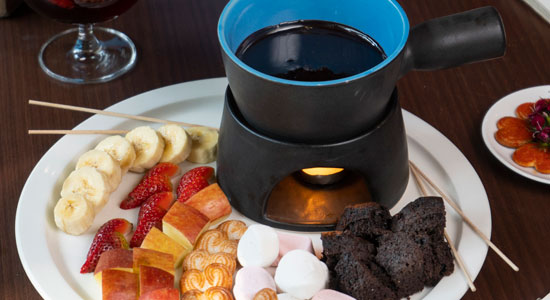
Restaurant like Pirates of Grill has created a special dessert, which will be on the offerings for all the people who believe in love.
May Interest: 5 creative marketing ideas that restaurants could benefit from this Festive Season

Similarly, Hitchki - Mumbai’s popular retro bar Hitchki, has planned a grand Valentine bash with the theme "Love Aajkal". They will be serving specially curated shots "Pehla Nasha" complimentary to the couples on 13th and 14th February. Adding more excitement, the best-dressed male and female on 13th Feb will be awarded Hitchki's Valentine special hamper. With its quirky menu, dreamy candlelight tables, red and white balloon decor, and romantic Bollywood 9o's to 21's hits by the DJ, Hitchki is all set to make your day special and enthusiastic!

Cricket – a game that has held a special place in the hearts of Indians since time immemorial. The sleepless nights of test matches and the fast-paced 20-over games have always had one thing in common – friends and family brought closer over scrumptious snacks and cheering for their favorite team – be it at the stadium or in the living room. This year, with the T-20 season just around the corner, restaurants across the country have introduced exciting offers for the game night.
Marriott Kolkata has introduced an extraordinary game night getaway offer at the property and curated a special home delivery menu under Marriott on Wheels, which consists of elaborate combos featuring the hotel’s signature delicacies for match-time nibbles on every game day.
Also Read: Dunkin’ India celebrates IPL cricket season, releases social media campaign
JW Marriott Kolkata has planned the perfect getaway for a luxurious experience this tournament season. The property is offering guests a chance to book a Deluxe Room at the hotel to spend thrilling match-nights with their friends and family, while enjoying complimentary 2 pints of beer per night, exclusive discounts on food, beverages and laundry services and complimentary breakfast at JW Kitchen. The thoughtfully crafted offer also includes a vegetarian and a non-vegetarian starter in the room or guests can choose to indulge in a 3-course dinner at JW Kitchen. Marriott Bonvoy members will also earn bonus points of 1000 per night. With late checkout and complimentary upgrade to the next available category, guests can book this exciting offer till Tuesday, 10th November, 2020 for stay dates till Wednesday, 11th November, 2020.
“We have recently opened after lockdown. Its good to see people coming out to party & to spend some quality time. We're following all safety & hygiene precautions at the premises. There's Live screening of all IPL matches & we're offering 15% discount on drinks with a newly curated menu,” said Harsh Chauhan, Owner at Catalyst.
Commenting on the same, Vishal Anand, Director, Moonshine Food Ventures, added, “With Bars opening after almost a gap of more than 5 months, IPL comes in as a great opportunity for the restaurant industry. IPL matches have always been a hit amongst the customers as many prefer to watch them outside with drinks and good food. With Bars recently allowed to open, we have already seen a marginal increase in footfall and APC but still not even 30% of our pre-covid sales. With IPL, we expect the footfalls to be better and we are offering some fantastic deals.”
May Interest: 7 New age Brand Principles for Restaurants
Not only this, every year, during the T-20 tournament, Indians from all around the world get together and rejoice in the riveting celebrations of the country’s favorite game. Cricket is a sport that ties all of us in an undeniable tradition that will never get old and this much-awaited tournament season is what we wait for with bated breath, during which we get together with friends and family to watch the game and indulge in scrumptious bites and delectable food that keep the spirits up.
Similarly, Delhi-based QSR chain Momo King has started Predict & Win Contest. The online contest which started from September 19th is expected to run until November 8th 2020. In order to participate, viewers should predict the winning team and man of the match for every cricket match. The questions will be posted every morning and the entries will be entertained until 7:30 pm in the evening. At the end of every contest, three lucky winners residing in Delhi will get a chance to win a delightful meal box by Momo King which comprise of Momo King’s signature dishes packed together in a box i.e 3 pcs momo, noodles or rice, curry and dips.

Ms Lovelina Joshi, a 38-year-old housewife, never knew her posts on social media like Twitter and Instagram are widely discussed and followed by others until and unless she gushed about a newly-launched herbs and seeds bread, which promises to boost immunity during the unparalleled times of coronavirus pandemic. The moment she posted a picture showcasing how her otherwise fussy eater kids are relishing the bread on the photo-sharing website, she got thousands of comments asking more about the bread on her feed. Not only her account was flooded with comments but also her following increased twice the follower she had within a day…
Also Read: 6 Tips to Create a Killer Social Media Strategy for Your Restaurant
This incident shows how consumers these days are looking for recommendations on social media before purchasing any product. And, unlike the previous times, they don’t look for any suggestions from a celebrity but the ones who are common like you and I. It is seen that real customer endorsement does more to build trust than any amount of content the brand post on their own. Consumers actually appreciate brands that focus more on their utmost needs during this difficult time. A recent study shows 58 percent of consumers are impressed by brands providing a necessary service, and 55 percent say they value brands that have made changes to help consumers.
Everything is purely organic in their page
Gone are the days when paid partnership was the thing. Since social media has evolved and so did its users, people have no fascination over the endorsed pages and campaigns. The likes and comments in the pages of real users are purely organic. They just post about the service they get and how the brand is following all the sanitization steps or how the delivery guy wore masks and uses sanitizer. Content posted by someone, who has used the service and felt safe influenced decisions of other customers more than anything else. The regular campaigns with actors, celebrities or paid influencers are likely to be ineffective at this time. The best way to build trust under such circumstances is by having customers review your services. It makes the brand more believable and helps overcome the confidence deficit consumers have at this time due to the prevailing fear mindset.
May Interest: Dealing with New Trends of Social Media Marketing
Real consumers have more targeted audience
More than 50 percent friends and followers of real consumers have more or less the same thought process like him/her. So, when the real consumer posts something then automatically it gets the liking of the similar mindset people, who might buy your product next when they are in need of it. That’s how a company will have a better mileage and success with several real consumers that suit their brand. When you have millions of followers with variety of interests, it might be tricky to create content that appeals to everyone. Real consumers create content on the topics that they’re passionate about. Whether it’s food, fitness or photography, they post something about it until and unless they haven’t felt strongly for it as they are not the regular ones to post on social media. Moreover they are credible users. Remember, how we used to think when a celebrity used to endorse a product, which clearly indicates that they are not the real users. Real consumers treat their followers like their friends, which means they’re honest and engage with them as equals.

One of the most treasured things we all value is our freedom. As India celebrates its 74th Independence Day, restaurants across the country are celebrating the spirit of Independence day with exciting offers and discounts especially curated for their reliable and loyal customers.
JW Marriott Kolkata has curated a special Independence Day Brunch with the greatest care and safety, to ensure that the current situation does not take away from our freedom to revel and feast with our loved ones.
“Citizens all across the country have held this historic day close to their hearts since time immemorial. The Independence Day Brunch on 15th August, 2020, from 12:30 PM to 3 PM, is sure to bring back the spirit of patriotism with authentic flavours that celebrate the diverse regional cultures of India,” shared a release by JW Marriott Kolkata.

Guests are invited to come and dine at the widely-loved all-day diner at the property, JW Kitchen, to unwind and indulge in the flavours of freedom, with exquisite dishes that boast of the true essence of India’s culinary heritage. The property has ensured that an elaborate and intricate set of safety and sanitation measures are in place to make guests feel completely safe and secure.
This Independence Day, celebrate the diversity of Himalayan food by savouring an extensive range of authentic and traditional delicacies from Tibet, Bhutan, Sikkim, Nepal and Ladakh offered by Momo King. The brand offers palatably crafted momos with native Himalayan herbs and spices, a refreshing take on the immensely popular street food.
Satisfy your belly with their signature momo, ranging from Nepali Kothey, Jhol, Sandheko and Choila Momos with a variety of filling to choose from such as Exotic Veg Beetroot, Spicy Cottage Cheese, Tandoori Soya Chaap, Spinach, Corn & Mushroom, Darjeeling Chicken, Ladakhi Mutton, Tibetan Pork and lot more. For health conscious foodies, the brand also offers a healthy range of Vegan, Gluten-Free, Whole Wheat, Thukpa and Malaysian Laksa.

“To add extra spice to your spirits on August 15, Momo King is offering a discount of 74% on its appetizing assortment of momos, noodles and rice. Pair your choice of Momo with a rich saffron colour and Mint dip and celebrate this historical day with a scrumptious meal at home,” added the statement.
Similarly, The Westin Gurgaon, New Delhi invites you to a three hour exclusive - one of a kind six course dining experience. “We want our guests to travel through taste. With an exotic set menu that features authentic delicacies from Sichuan, Japan and Thailand, our guests will be teleported by the aromas and taste of Asian cuisine,” shared Chef Anurudh Khanna, Multi Property Executive Chef, The Westin Gurgaon, New Delhi and The Westin Sohna Resort and Spa.
Also Read: The Westin Gurgaon, New Delhi offers exclusive gourmet experience on Independence Day
With five Private Dining Rooms and individual cubicle seating pattern which is socially distant by design, it allows customers to enjoy a contactless intimate experience. Restaurant seating has been reconfigured to maintain a minimum distance of 1.5 meters between tables and hand sanitizers are being placed at all key touch points.

Get Exciting flavours delivered home
As most of the people are stuck at home, these players are also delivering at the comfort of your home.
Must Read: Covid-19 has made most restaurant kitchen a dark kitchen, Is Brand Trust Next
Marriott on Wheels, the home delivery initiative of Marriott Hotels will also ensure that set meals for one or four are delivered from the heart of the kitchen to the comfort of guests’ homes, executed with utmost safety and strict guidelines. The wide selection of appetizers, main course and desserts is the perfect way to cherish this significant day with a grand feast with family and friends.
“We are delivering from 11 am to 8 PM in South Delhi and Gurgaon,” added the Momo King statement.

In a viral image doing rounds online, a black banner of Ancient Hyderabad a restaurant located at Pune’s IT-hub Hinjewadi, making its customer aware about the 'Biryani Policy'.
Biryani with or without aloo has always been a debatable topic. But nobody actually knows what authentic biryani is because every state and region in India has got its own taste and claim of being authentic.
“I feel there is nothing called authentic Biryani. India accepts everything and makes it its own, every region in the country has made Biryani there own and every variation is delicious,” shared Amey Marathe, Head-Culinary, Paradise Food Court that is known for one of the best hyderabadi biryani all over the world.

This restaurant in Pune has come under social media scrutiny as it claims all types of biryani would be referred to as ‘Pulao’ other than ‘Hyderabadi’ biryani.
"Bombay and Pakistani Biryani henceforth will be strictly called as Mutton masala rice. Calling anything with aloo is illegal,” read the post.
“Rice is staple to any cuisine and is eaten in different forms all over the world be it Risottto or paella or okayo!! It’s an adaptation of localite by creating and giving them their own names!! We need to understand the difference between biryani and pulao!! While Biryani is cooked by draining method mostly while there are exception, pulao is cooked by absorption method!! Biryani is more fragrant to pulao!! The kolkatta biryani is created and made according to the local taste and is same for other biryani like malwani biryani, Kerala biryani etc!! It follows the same process as in Hyderabadi biryani!! In my opinion naming only Hyderabadi Biryani is biryani is wrong,” added Chef Nishant Choubey, Consulting Chef, Indus Bangkok (Michelin Plated).
It also began a war on social media, where some people claimed lucknowi biryani more delicious, citing hyderabadi biryani as over-rated and popular.

In the business ecosystem it is important to run businesses on partnerships be it restaurants own employee or partnering with a third-party, collaboration is important part of running a restaurant. With this, the concept of restaurant influencer marketing has emerged as the easier way of attracting and engaging with customers. Many restaurants have started to actively engage with micro influencers such as food bloggers and restaurant reviewers. It is cheaper as compared to the traditional forms of marketing, targets the right customer base, and is high on results. Here are key pointers on how social media influencers are playing a very vital role in today’s time when it comes to marketing.
The Changing Face of Marketing: Marketing a restaurant has changed quite a bit when we talk about pre-social media era and now social media era. It has become little more affordable to move away from conventional advertising. However, going forward partnering or using bloggers gives you that instant reach which initially was missing. “A restaurant really didn’t know how it is going to penetrate with conventional advertising earlier. However, some brands or outlets are positioned in a way where you need to reach out to specific audience that’s where the bloggers come in and really help you out,” said Kushagra Nagrath, Senior VP, Lite Bite Foods.
Product is the Key: One very important thing is that if you want to send a particular message as a product or your restaurant wants to reach to very specific audience. That’s something that social media influencers can really help you with. “As a marketer I would never ever discount what the product is because marketing is just a channel to reach out to people to tell them that the product exists. But at the same time when people start coming into a restaurant, they start tasting the food and they will come back only for food because the ambience you can see once and absorb it but if you have to go back to a place it’s because of the food, the experience, the drinks etc. The way of communicating has evolved much more,” shared Vineet Arora, Head Marketing, First Fiddle Restaurants.
Engaging with Community: “I think today consumers are short on time and they are overwhelmed with the information. So, just me or the brand coming up with a communication is not enough,” pointed Moksh Chopra, CMO, KFC India. People are seeking shortcuts on information if that’s worth a while and that’s where the influencers have kicked in and people have micro passions now. “We engage with them on the forefront. We called it FACE. F is for food; we work with them if we want to launch some new products or want to show people how KFC kitchen operates. We invite influencers to come into our kitchen, walk in, they see the experiences themselves and they discover that how the KFC food, processes are so stringent and rigorous that anything that we hear from a brand perspective is actually false. A is about activation and we do lots of program around consumer passion. So, last month we launched a merchandise range so we did merchandise instead of advertising for the same. We partnered with fashion bloggers to come and talk about it. FACE for us is food, activation, community and engagement,” he added.

If a restaurant or bar opens its doors and no one is there to eat or drink, does it make a profit? Of course not. Customers are the lifeblood of the hospitality industry. However, even the busiest and most popular locations all experience the ebb and flow of business. There are certain times of year during which the stream of people can slow to a trickle, or perhaps even stop altogether. In markets that depend on seasonal visitors, such as skiing communities and along the coasts, the offseason can be a very lonely time for food trucks, family restaurants and others.
Just because your business may have to survive a quiet period doesn’t mean it should suffer. There are plenty of strategies you can employ to boost traffic to your location or become leaner. For example, you could create cross-promotional opportunities with other local entrepreneurs to attract new customers. You might streamline your operations when you expect activity to be at a low point and save money.
The accompanying guide contains numerous pointers you can use to help you become better prepared for winter or whatever form the slow months take. These periods of inactivity may be inevitable, but they don’t have to mean the end of your dreams.






Starting any business isn't easy but starting a restaurant is a totally different ballgame altogether. There are so many things to consider before you even start.
Choosing the Wrong Concept
First, you need to visualize the concept. A lot of people love food and have travelled a lot, which is where they make the mistake of thinking they can open a multi-cuisine restaurant with 3-4 of the well-known dishes from various places. But, that doesn't really work. To be successful, you need to stand out and be unique!
Tip: Choose ONE cuisine that will distinguish you from your competitors and ensure that you make it the best!
Also Read: Restaurant Startups Must Know These Things Before Starting Business In Hyderabad
Saving Cost on Staff, Especially the Head Chef
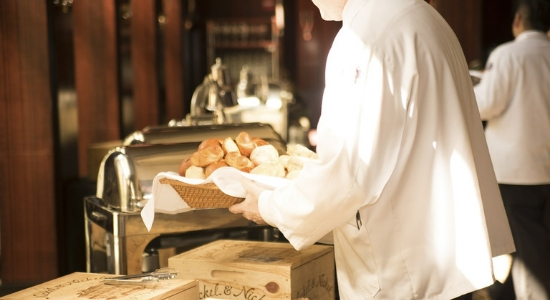
The second most important thing is finding a level-headed-chef who specializes in the cuisine that you choose for the restaurant. A good chef is easy to find but you need someone who doesn't just cook well but is also focused on the quality of the products, hygiene levels, training innovation, and respect.
Tip: Find a chef with all of the mentioned qualities –if you do find one, hire her/him immediately and never let them go.
Getting Confused
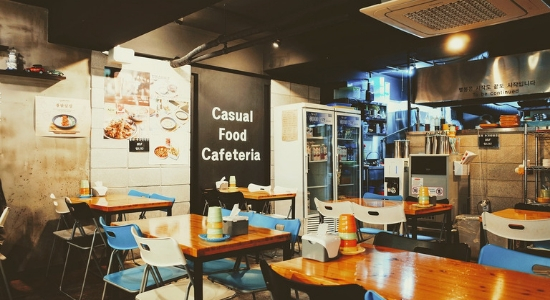
Third, you need to decide which segment you want to focus on. With so many concepts in the restaurant business today, getting confused is one of the reasons restaurateurs may face a setback.
Tip: Personally, for me, Fast Casual is the way to go – smaller outlets, simple but good food, low overheads and a huge number of customers.
Must Read: Five Strategies That Restaurant Startups Must Adopt To Grow
Not Including the Location Rentals in Restaurant Budget
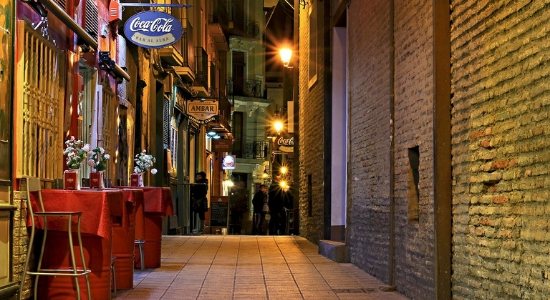
This might just be the most crucial factor to be considered. Rentals are the most important fixed cost in a consumer business. You need to avoid getting lured into opting for a great location while ignoring the rent. Getting a decent footfall in the first six months but in a high rental space will kill the business.
Tip: Pick a place where you know you will be able to survive even if you reach just 50% occupancy at peak hours in your cash flows.
Not Giving Importance To Training

This goes without saying – staff and training, both are very important. Considering this is the restaurant industry, you need to ensure that your staff can provide the best possible service and this is not possible without training.
Tip: Develop the right training module; it will happen with lots of trials and errors but your staff needs the right training support.
Krishna Gupta is Managing Director of 1441 Pizzeria. 1441 Pizzeria was established to bring the authenticity of Italian wood-fired pizza to India.

Running a floating restaurant business in Mumbai is not an easy task. A lot of hurdles come to the way of the owners of such businesses. Here is a 10-step checklist to run a successful floating restaurant business in Mumbai.
- To start with such businesses, it is very important to acquire a new vessel which suits the waters of the area and has been cleared in all functional tests.
- The first step towards building the business is to acquire all mandatory licenses, permissions and concerned NOCs. For Celestial, we acquired 108 licenses over three years to make sure our business was approved by all government and maritime committees. The process has been laid out now as there are more businesses coming up in the same industry, but this stands out to be the most exhaustive and challenging process in setting up a floating restaurant in Mumbai.
- Another important point here would be to understand the scalability of the business, and if there’s scope to scale the business ahead since the vessel itself is a huge investment adding up to the time taken for the business to breakeven.
- The entrance which helps in boarding the vessel should have a gangway (a narrow passage that joins the quarterdeck to the forecastle of the boat). This part is important for safe embarkation and debarkation of passengers. For eg: AB Celestial is permanently anchored alongside the Jetty with a breasting barge, therefore, it is comfortable to board at any time without using a boat to go to and fro.
- The yacht strictly needs to be serviced every year. There are inspection and service checklists that need to be taken into high consideration for a good life span and optimal functioning of the boat. From inspection of the hull, keel and rudder to applying essential paints, oils and antifoul for vessel’s durability and performance; even the smallest of issues need to be taken care of every year.
- Safety equipment should be up to date. At no point should the boat have lesser safety, security and lifesaving equipment than its capacity for passengers, especially in the case of life jackets.
- There are daily, monthly checks involved in a yacht too depending on the usage in water. Since Celestial doesn’t sail, it mostly requires monthly checks to prevent corrosion, straining of water and operating temperature. A dedicated team of safety and security helps us maintain the vessel over the working season.
- With respect to safety, since I handle daily operations too, I’m always on duty to check fire safety measures, smoke alarms, heat detectors, etc. This is a daily process involved in my tasks. Our head chef ensures kitchen safety which comes under the restaurant and boat maintenance.
- For a floating restaurant business, it is important to have a dedicated trained, professional crew who stay 24X7 aboard on the vessel.
- Marine furniture and furnishings are integral to the design, comfort and functionality of each of the spaces on board. It’s important to look for durability, weight, compactness and adaptability of the interiors and exteriors. Building and maintaining interiors majorly depends on the usage as well as the added exposure to changeable temperatures and added moisture at sea.
Also Read: Three Years And 108 Licenses – Know How India's First Floatel Opened Doors For Other Water Businesses
Aishwarya Bhende is the Director at AB Celestial, Mumbai’s first Luxury Floating Restaurant. The floating restaurant was launched in 2017.

The ambience and décor may be something that lures the diners to enter in the restaurant but it is only the food menu that makes them order more. A tactful design makes your customers want more from the menu and, thus, increasing your sales and adding to your revenue. Pictures on the menu card, food pics and prices mentioned send a subliminal message to consumers’ mind; that’s how it makes an impact on the consumers’ ordering and dining behaviour.
Many restaurants, now, hire menu engineers who study the behaviour and psychology of the consumers and then design the menu card accordingly. To make your customers order more, here are five menu design hacks you should keep on the mind.
Chef’s Special
Restaurants, big or small, these days are coming up with the mention of Chef’s Special. This is also known as the ‘eye magnets’. A consumer is always on the lookout what the chef recommends. Therefore, this is a crucial aspect. Depending upon your restaurant’s demand and the concept, you can either mention Chef’s Special on the entire menu or you can mention in each category, which could be North Indian Cuisines, South Indian, Continental, Desserts and likewise.
Also Read: What Makes Your Food Menu Unique? Know It All From Chef Manish Mehrotra
The Name of Food Items
When it comes to naming the food items on your menu, so far, two things are in trend. One, the traditional way of naming cuisines but with a twist. Terrace Grill’s menu, for example, has a mention of B-town-inspired names of the dishes, targeting the Bollywood fans. Secondly, telling the main ingredients without naming the dish. That’s how we found the menu of the newly-opened Tappa.
Chef Sareen has ingeniously divided the menu into small plates, large plates, salad, sandwiches and more such categories; without naming the dishes in all these categories, he had just mentioned the main ingredients, so that consumers could identify. Whatever style you choose for your restaurant in naming the dish, make sure you do a fair deal in targeting your consumers. Even if it is a cocktail menu.
Duty Free restaurant names the items well like Ladies First (gin, aperol, elderflower syrup and lime juice) and Boss Calling You (Beefeater Gin, St. German, Lime Juice, Elderflower syrup and rose water).
Adding Descriptions to the Dishes
This is one of the fast-picking trends. Most of the restaurants have started to add descriptions to the dishes – a way to hook your customers. Hyderabad’s Simply South by Chef Chalapathi Rao explains it's "menu items", clearly. Even if the diners are not from the Telangana region, they could easily get from the descriptions on what they should order. If you go through the menu of Simply South, just below the name of the dish, say Uragai Mamsam, the description says tender chunks of pickled mutton – our house speciality. Reading such a menu card, the consumers get a sense of the speciality items as well as the ingredients used.
Must Read: Three Essential Elements To Keep Your Restaurant Menu On Track
The Spots for Your Biggest Sellers
According to a Gallup poll, the diners at a restaurant quickly scan a menu spending 109 seconds at an average. This makes the job of a menu engineer/designer tougher. In just a limited time, a restaurant has to make a big impact. Here, the visual techniques play a vital role. From deciding the fonts of the titles of the dishes to the prices of the menu, restaurants must focus on how they could make the menu easy to scan. A tip – mostly, customers spend more time looking at the first and last food items on the restaurant menu. Therefore, the food items at these spots are among the top-selling dishes of the menu.
Ever Thought of Decoy Technique?
The term decoy is used for the food item which is outrageously priced and placed right at the top of other cuisines mentioned on the menu. The trick is to make look other dishes at a cheaper price when compared to the ‘Decoy’. For example, make your signature dish at let’s say Rs 800, or you could double the price of any of the dishes mentioned on your menu. Many diners might not want to pay Rs. 800, instead they will look for an affordable option.

These days the words ‘Entrepreneur’ and ‘Start-up’ are highly fashionable and used with a lot of pomp. And needless to say, that in this free world they are used with no restrictions. Rags to riches stories sell, the hero in all the movies defeats a bigger than size villain or threat which is beyond the capability of normal average beings. It’s always generally the David vs Goliath story. A story of self-belief, wit, courage and doing the right thing over everything else. This is the same reason why the word ‘Entrepreneur’ is glorified. An ‘Entrepreneur’ starts with just the match-stick and the box to set alight to his idea. If the match can set fire and create the warmth required to get some smiles is dependent on a lot of other factors. Not every match will set a lasting fire. And not every idea is a successful business. So the one which is makes a good story and is out everywhere. The public loves them, the media loves them. They become an inspiration. And the success or failure of the ‘Entrepreneur’ is never mathematics, the variables are too extreme to believe in perfect calculations.
At best all we have is to make some calculated risks and hope to give our match the best chance to succeed. And at the same time not go too hard at it and break it. Being an ‘Entrepreneur’ requires a balance between intense focus and at the same time calmness. In all this drama what we miss is the basics and gets blurred with the glorification of this certain word. Every single year, thousands of Entrepreneurs venture out in your city. We never hear about the thousand stories. We hear just a handful and they are the happy stories. But there must be something common in the very few who survive and make it to dream another day. And at the same time, there must be some common pattern in all the missed dreams too. So what is that one trait. Can it even be defined? If it can be, then doesn’t it make it very easy for every aspiring entrepreneur to acquire it. Of course not. Knowledge how doesn’t guarantee success in achieving it. There is a reason the best coaches were never the best players and vice versa.
Knowing the Inner Potential
It’s not that important to be an entrepreneur, what is most important is that ‘why’ you are one. And the reason ‘why’ will have to surpass everything else and be your strongest urge. So as long as we have the urge to stay irrespective of the results, we are only going to observe, analyze and improve and put up a better show. You can use different words to describe this urge – self-belief, conviction, persistence. It’s all of them, you’ll have to have the self-belief in the idea and yourself, the conviction to fight through the tough waters, and the persistence to last for longer than required with the same intensity. All this combined will make sure a majority of the conventional logic which leads to negativity is thrown under the towel. This urge is what will tap into some power in you which is beyond the intelligence and logic you understand from the books, it taps into a power you already possess which is your ‘instinct’. And ‘instinct’ never works with self-doubt and half measures. It is the biggest and the most natural strength we as humans have and the most necessary one for an ‘Entrepreneur’.
It’s all About the Instinct
Why do you want to do what you are doing? It can’t be because you hated your previous job or your boss. It has to be something pure and very directly related with what you are doing, maybe it is just the passion in creating something new and giving it to the world, maybe it is the feeling of responsibility and giving back to planet earth and the beings by making the world a better place, may be its about spreading smiles and making your customers comfortable, may be its about making money and creating value. But whatever it is, the conviction and the self- belief in the same needs to be bonded by life. Nothing can come change and question this and it is this belief what’ll pull your instinct out and make sure you last long enough to be successful. I personally don’t believe in exit strategies, if your house is going to be on fire, you have an option of killing the fire early be looking at the solutions, or you can just look at the exit and run. Exit strategies don’t make an ‘Entrepreneur’ they make him doubt his very existence.
The world needs entrepreneurs to succeed, they balance the capitalistic world we live in. Nations and multi-nationals live on proved and tried formulas, but every formula was the birth child of an idea. And, every idea started in a small mind of some entrepreneur. Check out Elon Musk, Jackma, Steve Jobs, Mark Zuckerberg, Henry ford, Jeff Bezos, Larry page & Sergey Brin and many others. Yes of course they are just the minute few successful ones of the millions who’ve tried. But they all did have this common urge, the complete focus and being super sure on ‘why’ they do what they do. “Failure was never their fear. Not trying was.”
Note: please note that use of his/her in the article is of no particular reference or preference to any gender. It is just for the ease of flow of thoughts through the article.

World’s largest coffee chain Starbucks is experimenting a lot outside USA with different product ranges, quality bakery products, new age café and concepts.
Entering All-Day Dining
The café chain has opened its first Reserve Bakery Café in Shanghai, which will offer made-to-order breakfast, lunch, and baked goods from Princi Bakery, along with weekend brunch. This new format category is Starbucks’s next step to grow its business in China.
“Today marks yet another significant milestone as we take everything we have learned around coffee and our relentless pursuit for food innovation, to create a new exciting all-day cafe dining and Italian aperitivo experience,” said Belinda Wong, CEO, Starbucks China in a press statement.
The new café will offer coffee and tea cocktails crafted by mixologists along with the premium Starbucks Reserve coffees.
Hiring Elderly People
The American coffee chain Starbucks on Friday announced the opening of a new cafe in Jalisco, Mexico, which will be exclusively operated by old age staffs. This is the second Starbucks café in the region to hire staffs aged between 52 to 66; the first launched last year in Mexico City.
“We have become the first job experience for 80% of our partners because we believe in them and have designed a personalized career path,” said Diana González, Head HR, Starbucks Mexico.
Starbucks, had partnered with the National Institute for Elderly People five years ago, is aiming to hire 120 senior workers by 2019. The coffee chain has hired 14 workers at the Jalisco outlet.
Coffee Innovation
Known for its innovative beverages and coffee globally, Starbucks is taking beverage innovation to new heights with the launch of 134 new, crafted beverages. Delivering on the iconic ‘Third Place’ experience, while strengthening commitment to innovation and coffee passion, Starbucks has introduced ‘Starbucks Barista Pride’ where baristas from each Starbucks store will feature a beverage unique to their store, conceptualized and created by themselves. “Starbucks is committed to delivering an unparalleled, unique experience for every customer. At Starbucks, we believe in celebrating each customer’s individual coffee preference and profile. For us each cup of coffee is unique and especially suited to the coffee palette of our customer. With a deep understanding of coffee, our Starbucks baristas personalize each cup to perfection,” shared Veetika Deoras, Head – Marketing, Category, Digital and Loyalty at Tata Starbucks Pvt. Ltd.
All Starbucks store across India will serve a specially curated beverage, enabling customers to ‘coffee hop’ and try 134 unique beverages till the end of February.
Expanding Delivery Network
The global coffee chain is entering delivering in the UK for the first time with millennial customers willing to double the price of their coffee. The coffee chain recently announced that it will begin piloting the coffee-to-your-door service in London at the end of the month in a deal with UberEats.
This will also allow customers to order a hot drink from Starbucks on the UberEats app.
The café chain has made it 95 per cent of its menu available through the app.
The Seattle based café chain is also expanding its delivery in China offering delivery at around 2,000 stores in 30 cities by the end of this year, up from 150 stores at the end of September. Starbucks began working with its Chinese delivery partner, Ele.me, three months ago. "Customer behaviors are shifting rapidly," shared Kevin Johnson, CEO, Starbucks to The Associated Press. "We must continue to adapt and adapt rapidly to meet our customers where they are,” he added.
Partnering with Nestle for Retailing Coffee
FMCG major Nestlé has launched a new range of coffee products under the Starbucks brand, after the FMCG major sealed a licensing deal with the coffee giant in August 2018. The new range consists of whole bean and roast coffee grounds, as well as Starbucks capsules developed using Nespresso and Nescafé Dolce Gusto proprietary coffee and system technologies.
Nestlé will roll out these products in several markets across Asia, Europe, Latin America, Middle East and the US in grocery stores and major online platforms.
Taking the Vegan Root
Starbucks Portugal has increased vegan food options, adding vegan cakes and plant-based sandwiches to its menu. The new plant-based sandwiches feature ciabatta bread with seasoned pumpkin, sweet cranberries, fresh vegetables, and dairy-free chipotle sauce.
Starbucks Portugal’s has also included its kombucha drinks, fruit and vegetable smoothies, and fruit salads to the menu apart from dairy-free almond, soy, and oat milk.
Expanding Stores
The global coffee chain is expected to break even by the end of FY19, after more than six years of opening its first store, here in India.Tata Starbucks, the joint venture between Starbucks global and the Tata Group, is aiming to achieve break even by FY20.
“The break even is expected for FY 19-20. India, while it presents a tremendous amount of opportunity there are also challenges, “said Navin Gurnaney, CEO, Tata Starbucks.
The coffee chain is also planning to open around 144 stores in India by this fiscal.
Currently, the coffee chain is operating 136 stores in the country and will finish this year at 144 stores, with additional outlets in the future.
Gurnaney, who took charge last month after replacing Sumitro Ghosh said that the growth is always on their mind. “We have seen that in other Asia Pacific markets, once the market approaches the USD 2000 per capita income point, then it is almost a recognized point of inflection. That’s where the consumption really takes off. It’s a big pie and there is room for everybody to grow,” he added.

Hiring a design professional for your new restaurant is a challenging task - given the proliferation of design studios and professionals. With advances in software and better resources available, portfolios look good on paper - but to select a design professional against many others, here are five key points to look for, in no particular order:
Experience
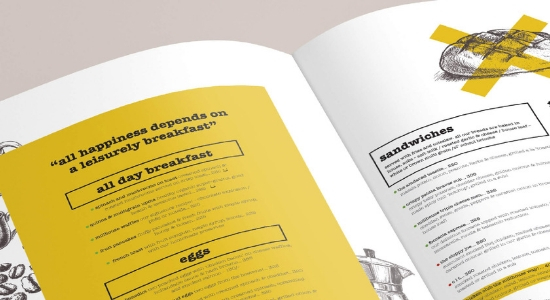
Millhouse Ahmedabad Menu
F&B (food and beverage) brands have a unique set of design requirements - it goes beyond designing collaterals to crafting a holistic experience. A design professional or a studio that has prior experience of developing other F&B formats would possess a certain amount of domain expertise and would also understand the nuances of the industry. This allows for a faster and smoother process while developing the design and also enables the designer to bring in learnings from other projects as well.
Ability to Think Strategically
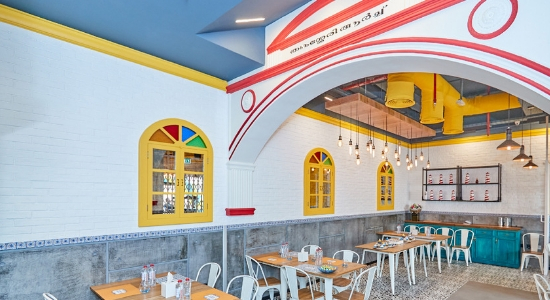
Tamarind Terrace Dubai
This is also an important factor to consider. It ensures that the restaurateur is working with someone or a team who is able to think of the larger picture - beyond just the ‘creative’ inputs. The design has the power to shape behaviour, define experiences and build a brand. Strategic thinking can take many shapes - from positioning the brand to defining the concept of the restaurant. A design professional or a studio that is able to bring designing thinking into the process enables a deeper and ultimately more successful impact.
Must Read: Four Essential Design Elements For Casual Dining Restaurants
Attention to Details
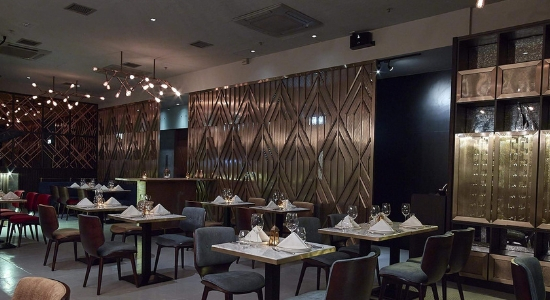
Daarukhana Hong Kong
While broad-based strategic thinking is important, what really makes a restaurant stand out is the attention to details. Whether it’s the furniture or the table setting or simply the way servers greet the patrons, the restaurant brand really comes alive through these multiple interactions. A designer needs to possess obsessive attention to detail - looking at every element not just from his or her perspective but more importantly from the point of view of people it is being designed for - servers, patrons and owners alike.
Ability to Work as a Partner and not a Vendor
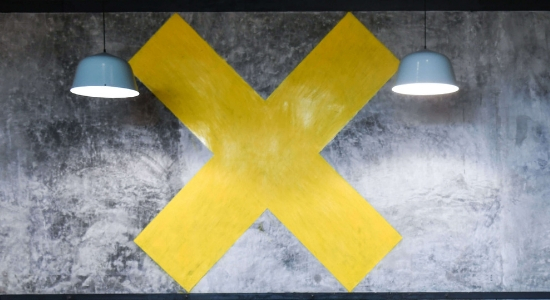
Millhouse Ahmedabad
If there needs to be a hierarchy of aspects, this would probably be the first. When designing your restaurant, it is important to work with a team which is bringing in independent thought, attention to detail and experience to the table. And when you do engage with such professionals it is important to enable them to come onboard as a thought partner, not a vendor who is executing.
Most successful restaurants are usually the result of a collaboration of a shared vision. While identifying who you want to work with - look for someone who shares your passion and enthusiasm about your brand and is as excited as you to build this together.
Original Thought
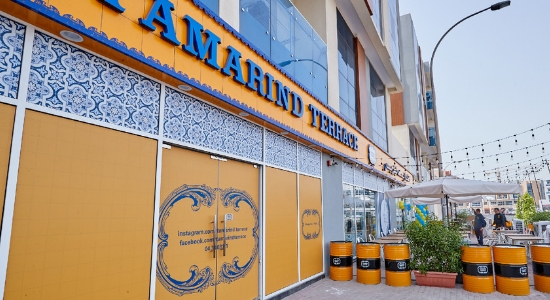
Tamarind Terrace Dubai
Probably the most obvious but in today’s Pinterest-driven age where every other trendy restaurant looks like something you’ve seen before - original thought is what ultimately stands the test of time. Look for designers who are able to present their work not with visuals but with a strategy or studios that define a principle or a vision that informs their work. Chances are - their process starts with a degree of original thinking and not a Pinterest mood board.
About the Author
Saurav Roy is the Design Director and India Partner for Idea Spice. He has been a part of the organisation since its inception. A graduate from the National Institute of Design, he works closely with entrepreneurs and organisations in India to create dramatic and visible impact.

For any business to run successfully it require more than just capital.It requires a good force of strategy, marketing, research, promotions, quality and packaging. Today’s consumer is a lot more aware and conscious about what they are buying. They believe in verifying the authenticity of the brand, safety of the products, its values and its vision.
Packaging represents the brand; first contact of a brand to its consumer is through the packaging. It is considered as an opportunity for any brand to communicate their message visually and plays a pivotal role across industries. In retail sales, the packaging attracts the customer’s eye and affects the buying decision. If a product has unique packing it instantly gathers the customer’s attention.Packaging is considered as a differentiation tool, which aids consumers to recognise one product from the other and helps them in making a choice among a wide range of similar products.Packaging excites the customers and people often tend to rebuy products from the brand that use attractive packaging.

Packaging depends on various factors such as colour, logo, design, fonts, and material used. Colours help in differentiating one product from competitor’s product. Colours used in packaging, not only helps to draw consumer attention but can also be used in context of marketing goals. Similar type of products often adopt similar packaging styles in terms of colour and design,for e.g. black, silver and gold are often used for luxury products. Brands that aim to present an edgy look will often pair bright colours with black, which alsoshowcases energy and sophistication. Similarly, each colour has its own relevance and importance.
Different products have different designs in packaging, for example- Tech products come in sleek and innovative packaging, beverages in different types of bottles and food in such packages that it is convenient for the customers to consume.Design helps in recognising the category of the product.The packaging designed to be easily carried, used and stored will perform better in the marketplace as compared to others. Even the shape of packaging speaks for the product like angular shapes are associated with masculinity and femininity can be visualised in curved shapes. Innovative packaging attracts consumer and helps in adding value to the product.

Labelling on products provides information on the category of the product, its ingredients, and instructions for using, consuming them. This works as a guide for consumers, to know what actually their products contain, like nutritional fact, and when the product was manufactured, by which government authority the products are certified and whether it suits their need or not. The language used on packaging also influences consumer behaviour, if the text is clearly readable it is appreciated more.
The material used in packaging has a strong impact on buying behaviour. Good quality material not only safeguards the product during transportation but one of its main objectives is to protect the product from any damage or loss in its nutritional value. It saves the product from UV rays, and other elements that can harm the product. Nowadays consumers are becoming environment sensitiveand they prefer eco-friendly packaging which can be recycled easily.

There are many factors that affect buying decision of consumers in one or the other way. These are quality, price, brand value and ethics, brand history and reputation, packaging and availability of products. A brand needs to equally focus on all of these to build a trust amongst its target audience.Loyalty of the consumer is build basis the product quality and its worth vis a vis the price points. A loyal customer is hard to gain but once earned, their word of mouth helps the brand grow and influence the purchasing decision of the prospective customers.

The restaurant menu is a wider concept. If I narrow it down and speak only of a Pan-Asian restaurant in India, you get so, so many options on the menu. I do not want my menu to be perceived as such. Today when you take a look at the menu of a Pan-Asian restaurant in India, you end up realising that it is essentially a Chinese restaurant with few dishes here and there. If you take up a Chinese restaurant they serve “Chinjabi and Sino-Ludhianvi” food. If a restaurant decides, ‘yes, we want to move towards serving the Pan-Asian’ as it’s the flavour of the month or it is something in demand, it should include Indonesian and Thai, too; it should maintain the authentic flavours. I don’t serve more Chinese or Japanese cuisines. In fact, I want to be less Chinese and more other cuisines. That is my vision for Wok Tok at The Grand, Delhi. You’ll see Japanese and Chinese being served less, and other cuisines more. In the orchestra, those other instruments - Indonesian, Burmese, Thai, Malay play a bit louder; Chinese and Japanese are in much more precise form. That is my vision.
Must Read: Menu Hacks For Your Online Food Delivery Business In Mumbai
You should always keep a track of these three elements while designing or re-designing your restaurant's menu.
Defining the Concept of the Restaurant
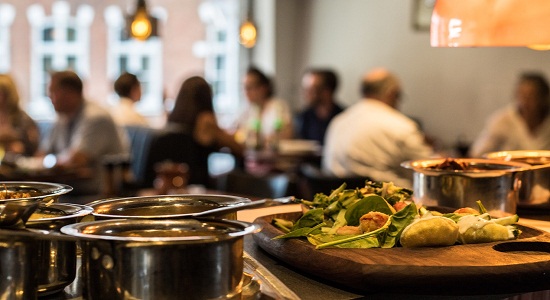
The concept may already exist. You might just want to change the menu but still, you need to readjust. The times might have changed or the restaurant has become old now. You need to focus on one question – “What is going to be the concept of the restaurant?”And then the rest - what space you want to hit the market, where do you stand and what you are. More importantly, you need to know what you are not. What your restaurant is not. Know if there are any boundaries - huge or tight, within which you’ll operate. Those boundaries have to be very well defined.
Respecting the Geography

In terms of the area or the geography you are in, you have to respect those sensibilities. If there are more vegetarians, your menu has to be designed accordingly. Geography doesn’t mean just the location; it’s the times, space and the place you live in. You see much more examples of lactose or gluten intolerance than you would see 10 years back. So you have to have those options on your menu. If there are more vegetarians, you want to have those kinds of cuisines. The next menu I’m doing for the Cascades, my all-day dining restaurant, 40-45 % of the menu is vegetarian. So, you have to respect the geography and what the market demands.
Click To Read: Points To Consider While Designing Menu For Restaurant
Maintaining the Balance, Flavours
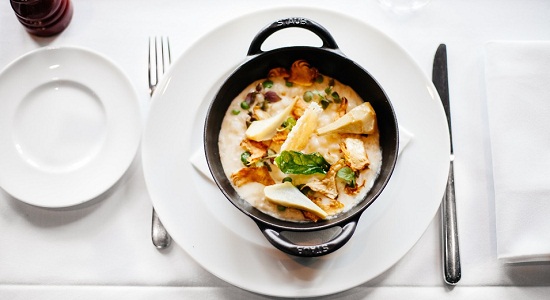
And then you have to look at the balance of rich vs light food. I always wanted to have my food very flavourful. Whether it’s an Indian, European or a Japanese restaurant, I don’t like bland food. When I say bland food, I don’t want you to mistake it for the spicy cuisines we are served in India. It’s the flavours that matter. The flavours have to be robust - that is my thing. I have visited a lot of restaurants and had insipid food that really didn’t speak to me. I love vibrant flavours. That’s a personal and individual thing to me. And then I prefer to balance across from rich to light, from flavourful to delicate, from spicy to non-spicy, from veg to non-veg; you have to balance all these aspects, based on the geography, and the kind.
As told to Sara Khan, Feature Editor, Restaurant India

A fast-casual restaurant startup could require mid-to-high six figures as the initial investment, whereas the fine-dining or a casual-dining restaurant in India needs a huge amount for efficient functioning. India is the second largest startup ecosystem in the world and is expected to witness a growth of 10-12% per year. A question on how to increase the profit margins always remains on top of the mind of the restaurateurs. If you are putting up the restaurant business, you definitely want to see more and more customers walk-in through the doors, besides, maintaining a loyal clientele.
Below are the tried-and-tested ways for the growth of the profit margins of your restaurant startup.
From renting your venue out for private events to offering a seasonal menu, there are multiple research-backed strategies you can use to run a successful restaurant. Here are five growth strategies that your restaurant startup must follow to boost the growth curve.
Good Social Media Presence

Representational picture | Photo Credits Pixabay.com
Social media presence has, in recent times, become an essential part for a restaurant existence in the market. What we really keep in mind is that our Facebook and Instagram presence is so strong that it actually attracts the audience to come and stay at the place. For example, in our most recent campaign, we collaborated with a bunch of social media fashion influencers and came up with a concept "food meets fashion". We did a couple of videos photo shoots that actually revolved around our food meeting these fashion divas. This involved a lot of cross promotions, etc. Also, a very active social media presence helps the viewers to become potential customers.
Must Read: Know Your Clientele: Varun Puri Suggests Restaurateurs
Strong Conceptualization
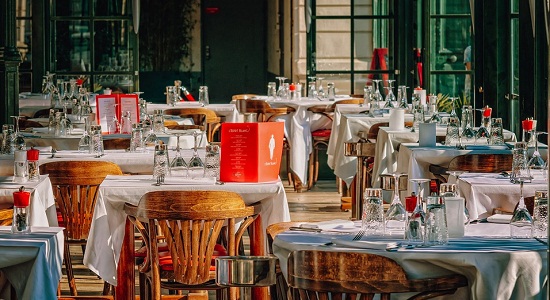
Representational picture | Photo Credits Pixabay.com
The restaurant industry in India works on a strong conceptualisation, which essentially means a concept that your restaurant business is made or built upon. All our outlets for Imly have an individual and important concept behind. For instance, our first-ever Imly (Rajendra Place) was built as a train-like looking ambience from inside and outside. Depicting the true nature of the concept which was getting food from several states of India under one roof, and mostly street food which uses a lot of sweet and sour flavours with tamarind - Imly and, hence, the name.
Good Food
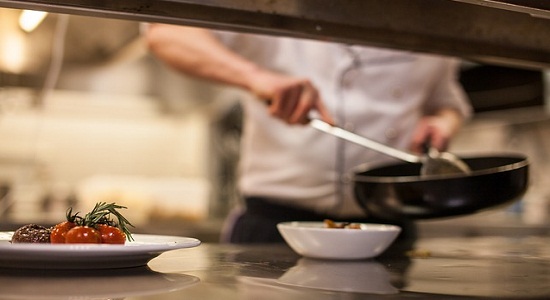
Representational picture | Photo Credits Pixabay.com
Good food is the essence of a good restaurant. It’s actually the Hero. You can give your guests everything but he'd just end up coming back for how good your food was/is. The signature dishes in our outlets like - Palak Patta at Imly, Nalli Nihari, Lamb Chops at Too Indian, etc have been loved by our patrons and we've actually included them in our new restaurant chain's menu.
Welcoming Service Staff Presence
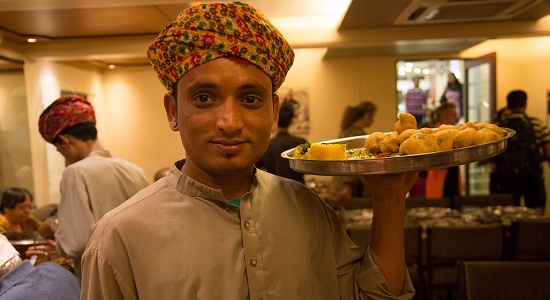
Representational picture | Photo Credits Pixabay.com
First impressions are very important and most of you would agree to the fact that apart from how the restaurant looks the first impression also comes from how your team greets the guests. Like escorting the guests to their respective tables for starters and then greeting them with a smile and being polite. All these things count in making a good effort for your guests to make them come back. There should always be something for the guests to look/come up to.
Click To Read: The Best Way To Advertise Your Restaurant
Good Offline Marketing Strategies
Online marketing is really the new-age marketing technique being followed by anyone and everyone. But the good old offline marketing strategies never go out of style. Few things we've been implementing regularly - hosting a lot of events at regular intervals, advertising in media and a strong PR is really an integral part of your visibility.
Varun Puri is the Founder of Duty Free Bar in Gurugram.

Worried about making your food look good? These food styling tips by the author, maverick baker and a renowned blogger, Shivesh Bhatia will definitely help your restaurant startup in the presentation and marketing. While these expert food tips will help you save money for your restaurant startup, it will also grab attention on the various social media platforms. Shivesh Bhatia talks at length and shares easy food styling tips in his book - Bake With Shivesh.
Shivesh talks about the foolproof tips and tricks, his favourite techniques and the dos and don’ts on social media for anyone and everyone interested in food styling.
This is an excerpt from "Bake with Shivesh" by Shivesh Bhatia, published by HarperCollins India. Published with permission.
Selecting the Props

Props help you build a story and make the frame interesting. While I prefer going for completely clean and minimalist styling at times, I’ve realized that I gravitate towards photos with more props. Keep in mind that props are like the supporting cast of a movie. They’re crucial since they can make or break the frame, but they should ideally not overpower your star, the food.
The props that feature in food pictures are plates, bowls and cutlery. Adding cutlery to your frame makes the food accessible and the photograph doesn’t seem staged. When you’re selecting a plate or a cake stand for your dessert, please ensure that it is slightly bigger than your dessert but not too big. You should be able to see about an inch of the plate around your dessert. The plate should be simple, not have too much design on it and should be of a neutral colour.

Besides that, ingredients that have been used in the recipe make for great elements to fill up the space with. They’re also excellent indicators of the flavours of your food. I almost always keep the fruits used in the dessert in the frame. If the recipe calls for cinnamon, include cinnamon sticks in the frame. Similarly, if you’ve used pecans in your dessert, break a few of them and scatter them around. I also sometimes use fresh flowers, old pictures, vintage cameras, glass jars, wooden chopping boards, milk bottles and old books. Be creative and fun while selecting the props but make sure to not overdo it.
An important question to ask while adding props is how many are too many? If you go overboard, you might end up overcrowding your frame, taking away from the beauty of the dessert. Make sure your frame is neat. Sometimes when there is too much going on, the viewer gets confused as to what is being highlighted in the picture. It is important to maintain visual hierarchy.

While selecting your props, keep a few things in mind:
1. Make sure the props are not shiny. If the prop you’ve picked up is shiny, it’ll reflect light into the camera which will distract the viewer. I always try and select ceramic plates and bowls because their finish looks great in pictures. Besides ceramics, enamelware, stoneware and wooden props also work well. If you’re putting metal props in the frame, make sure they’re dull. I also stay away from plastic plates and bowls as I’m not a fan of their artificial finish.
2. The props should complement the mood that you’ve selected for the picture. A rustic metal bowl will look out of place if the rest of the set-up is clean and bright. Similarly, a white plate will take away too much attention if everything else in the frame is dark and moody.
3. Ensure that the props you’re adding to your frame don’t overshadow the food. The props shouldn’t be too big.
4. Always keep in mind that the props should be relevant to the scene you’re creating. A lot of times, we may end up adding things to a frame where they’re not needed. I’ve made the mistake of keeping forks in a frame with croissants. While the vintage forks were pretty, they ended up looking odd when kept with a dessert that you don’t need a fork for.
Sourcing Props

A lot of times, I’ve had people tell me that they’re not able to style a frame beautifully because they don’t have too many props. Firstly, you can never have too many props. Secondly, you don’t need a treasure trove of props to style a picture. You’ll be surprised to see how much a basic glass bottle, a bunch of flowers from the garden, a crumpled newspaper or a burlap can add to a frame. Most of the large department stores like HomeCentre have a great collection of cheap but pretty plates. They also stock things like jars, bottles and chopping boards. For those living in Delhi, Khurja is a great place to source ceramics from. Stores like Nicobar also have a great collection of tableware. Their marble cake stand and cheese boards make for great props. In Mumbai, Clove – The Store is my favourite because you find so many brands under the same roof. During my visits to Mumbai, I’ve also picked a few interesting things from Mitti in Andheri West.
As someone who calls himself a food stylist, I don’t have a massive collection myself. I often reuse and recycle.

I have built my collection over time by picking a few things from the stores if I spot anything interesting, sitting down to hunt for pretty tableware online and getting backpacks full of ceramics from my travels abroad. I’ve also made trips to small shops in Old Delhi to pick up rustic metallic props. I also go to scrap shops because I always find something interesting there. Sourcing props is a lot of fun and you don’t always need to spend a lot of money on getting something for your pictures. I remember picking up a knife I love from a small street shop in Bangalore that I just happened to cross. In Indonesia, I convinced a grain seller to barter an old can he was using to measure grains by getting him a brand new one. You just need to keep your eyes open.

Mumbai has essentially been known as the city of dreams. The culture of this city is vibrant and dare I say a boisterous one. It is a fantastic mix of different cuisines, food, language, culture, fine arts and festivals and not to mention the many faces of Bollywood.
Must Read: Why It's Important To Switch To Digital Menu Boards
Food is one of the most important facets of Mumbai's culture. This maximum city's blind date with food often ensures a whirlwind affair, a very passionate romance! Every Mumbaikar has a weakness for local street food and for local cuisines. This diverse city is famous for street food such as vada pav, chakli, chivda, modak, batata rassa, dabeli, missal pav among many others. Mumbai is such a diverse city that its people have happily adapted to many different cuisines and even customized them into mouth-watering dishes tailored for the local palate.

FreshMenu understands this tryst of the inhabitants with the street fair and tweaked a few local dishes that would make them fall in love with food all over again. Our talented chefs understand the pulse of this lively city and have curated dishes that suit this cosmopolitan palate.
Optimising the Menu
While optimising the menu for your online food delivery service business in Mumbai, you should keep a note of all the points mentioned below.
- Research (Identifying need gap)
- R&D specific to the city
- Menu testing
- Menu shortlist
- Product introduction and promotion
- Promoting it within micro influencers
- Data gathering and improvement
Menu Localization
Vada Pav Sliders
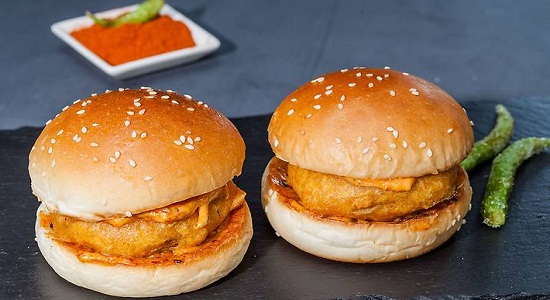
We gave Mumbaikars a variety of vada pav sliders, which is one of the favourites go on the snack option for the local food lovers. Sitting on the promenade at Marine Drive on an evening gazing at the Arabian Sea with a vada pav slider is a sight to treasure. Vada Pav is believed to have been invented by a vendor at the Dadar train station in the 1960s for the commuters who were always in a hurry! There’s no hurry to finish our delicious take on this classic – well-seasoned and tempered potato patties coated with a spiced gram-flour batter, are deep fried and sandwiched between African peri-peri seasoning, brioche buns.
Click To Read: 4 Strategies That Can Make Your Menu A Star Menu
Or maybe sitting in the balcony and sipping into a piping hot cup of tea and a bite on a Vada Pav Slider with Peri-Peri Mayo and Brioche Bun is a delight, which no one would want to miss out on. This mouth-watering Vada Pav is well-seasoned and tempered potato patties coated with a spiced gram-flour batter, are deep fried and sandwiched between peri-peri mayo smeared, halved brioche buns. Deep-fried green chillies tossed with salt accompany your delicious Vada Pav.
Spicy Falafel Wraps
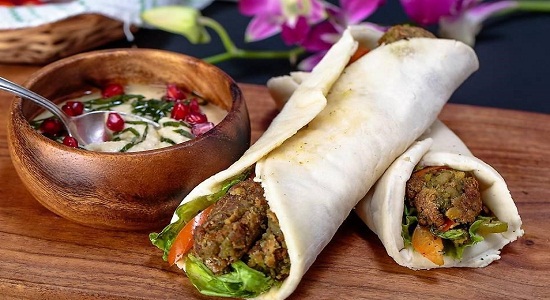
Apart from being the biggest metropolitan city in the country “Amchi Mumbai” promises a high adrenaline rush and diverse city life to all the inhabitants. FreshMenu curated Spicy Falafel Wraps for those who love their food rolled in a wrap, grab this delicious combo in their busy hectic schedule. This wrap will be a sheer delight to all the Mumbaikars who squeezed themselves in the crammed local train. It comes with Falafel wrapped in a soft pita with pickled veggies, crunchy lettuce and a Tahini spread.
Also Read: Points To Consider While Designing Menu For Restaurant
Adding Local Flavour
Local Flavour adds an interesting medley for different folks with a different lifestyle just like how this big city promises a home to these chirpy tireless Mumbaikars. FreshMenu tied up with Mumbai FC Team the previous year and co-created the menu that has familiarity with local tastes.

Vegannection created a rage as soon as it was launched; it's the world's first 100% vegan prepaid cash card. Vegannection is created and run by an international group of humble vegans who set out to do what they can to contribute to making this world a better place.
"We are very grateful to have extremely talented and dedicated professionals on our team committed to making Vegannection as great as possible."
~JP McCormack
JP McCormack, Vegannection Partner, the UK and Ireland, tells Restaurant India about the world’s first 100% vegan debit card and its scope in the Indian market.
Read the News: World's First 100% Vegan Debit Card Launched
The Idea Behind Vegannection
Having experience in running a vegan business, we have felt, first hand, how difficult it is to compete with non-vegan businesses and already established big brands. On the other hand, we had this idea about creating something that would entice people to buy vegan products even more. Joining forces with other vegan professionals and having conducted extensive market research, we have developed this tool that would support 100% vegan economy and give people a better shopping experience while rewarding them for buying 100% vegan.
Response from the Restaurant Partners Worldwide
Given how Vegannection is not limited to just restaurants, we have been getting an amazing response from all types of vegan businesses from around the world. The things that our partners point out is how easy and practical it is to work with Vegannection card and how the consumer benefits Vegannection offers bring them more clients.
Vegannection in Indian Market
With vegan restaurants, catering and home delivery becoming available in almost all the cities, veganism is definitely on the rise in India. What we at Vegannection will be looking to accomplish will be to help vegan restaurants and food establishments grow even more by rewarding the conscious consumers for choosing them, thus, bringing them more clients, and loyal ones.
Vegan Food in India
It is widely known that, when it comes to Vegan food, India has one of the friendliest cuisines around. Flamboyant use of spices and sauces charms new life into the likes of potatoes, cauliflower, peas, and eggplant which makes us all the more excited to partner with Indian vegan food establishments.
Must Read: These Restaurants Are Breaking The Mental Block With Vegan Diet
Promotional Strategy with Vegannection
Our promotional strategy is based on constant research, development and upgrading of our service and the referral aspect of Vegannection where our clients enjoy the benefits of vegannecting with other people.
We believe that the best possible marketing is the excellence of the product, the better it is, and the more people talk about it.
As a result, Vegannection has already been featured on radio shows, major internet vegan media brands and despite being focused only on London, the UK, we now have cardholders in 37 different countries worldwide.
We obviously maintain a very active presence on social media, but for the most part, we just let Vegannection speak for itself.
Also Read: How This Blogger Turned Her Passion For Vegan Food Into A Restaurant
Vegannection Expansion Plans
Our current plan is to focus January on London area, followed by other cities in the UK come February, then other countries in Europe such as, Spain, France and Ireland in March after which we will turn to other continents looking to expand to Asia, US, South America, etc.
Copyright © 2009 - 2026 Restaurant India.




